#uses of steel in commercial buildings
Text

Steel buildings first became popular in the early 20th century. The use of steel in architecture is considered to be one of the most innovative construction developments in history, allowing architects to build structures on a scale they had never imagined. Here, we are listing down the top benefits of using steel in construction.
6 notes
·
View notes
Text
The Ocean Sciences Building at the University of Washington in Seattle is a brightly modern, four-story structure, with large glass windows reflecting the bay across the street.
On the afternoon of July 7, 2016, it was being slowly locked down.
Red lights began flashing at the entrances as students and faculty filed out under overcast skies. Eventually, just a handful of people remained inside, preparing to unleash one of the most destructive forces in the natural world: the crushing weight of about 2½ miles of ocean water.
In the building’s high-pressure testing facility, a black, pill-shaped capsule hung from a hoist on the ceiling. About 3 feet long, it was a scale model of a submersible called Cyclops 2, developed by a local startup called OceanGate. The company’s CEO, Stockton Rush, had cofounded the company in 2009 as a sort of submarine charter service, anticipating a growing need for commercial and research trips to the ocean floor. At first, Rush acquired older, steel-hulled subs for expeditions, but in 2013 OceanGate had begun designing what the company called “a revolutionary new manned submersible.” Among the sub’s innovations were its lightweight hull, which was built from carbon fiber and could accommodate more passengers than the spherical cabins traditionally used in deep-sea diving. By 2016, Rush’s dream was to take paying customers down to the most famous shipwreck of them all: the Titanic, 3,800 meters below the surface of the Atlantic Ocean.
Engineers carefully lowered the Cyclops 2 model into the testing tank nose-first, like a bomb being loaded into a silo, and then screwed on the tank’s 3,600-pound lid. Then they began pumping in water, increasing the pressure to mimic a submersible’s dive. If you’re hanging out at sea level, the weight of the atmosphere above you exerts 14.7 pounds per square inch (psi). The deeper you go, the stronger that pressure; at the Titanic’s depth, the pressure is about 6,500 psi. Soon, the pressure gauge on UW’s test tank read 1,000 psi, and it kept ticking up—2,000 psi, 5,000 psi. At about the 73-minute mark, as the pressure in the tank reached 6,500 psi, there was a sudden roar and the tank shuddered violently.
“I felt it in my body,” an OceanGate employee wrote in an email later that night. “The building rocked, and my ears rang for a long time.”
“Scared the shit out of everyone,” he added.
The model had imploded thousands of meters short of the safety margin OceanGate had designed for.
In the high-stakes, high-cost world of crewed submersibles, most engineering teams would have gone back to the drawing board, or at least ordered more models to test. Rush’s company didn’t do either of those things. Instead, within months, OceanGate began building a full-scale Cyclops 2 based on the imploded model. This submersible design, later renamed Titan, eventually made it down to the Titanic in 2021. It even returned to the site for expeditions the next two years. But nearly one year ago, on June 18, 2023, Titan dove to the infamous wreck and imploded, instantly killing all five people onboard, including Rush himself.
The disaster captivated and horrified the world. Deep-sea experts criticized OceanGate’s choices, from Titan’s carbon-fiber construction to Rush’s public disdain for industry regulations, which he believed stifled innovation. Organizations that had worked with OceanGate, including the University of Washington as well as the Boeing Company, released statements denying that they contributed to Titan.
A trove of tens of thousands of internal OceanGate emails, documents, and photographs provided exclusively to WIRED by anonymous sources sheds new light on Titan’s development, from its initial design and manufacture through its first deep-sea operations. The documents, validated by interviews with two third-party suppliers and several former OceanGate employees with intimate knowledge of Titan, reveal never-before-reported details about the design and testing of the submersible. They show that Boeing and the University of Washington were both involved in the early stages of OceanGate’s carbon-fiber sub project, although their work did not make it into the final Titan design. The trove also reveals a company culture in which employees who questioned their bosses’ high-speed approach and decisions were dismissed as overly cautious or even fired. (The former employees who spoke to WIRED have asked not to be named for fear of being sued by the families of those who died aboard the vessel.) Most of all, the documents show how Rush, blinkered by his own ambition to be the Elon Musk of the deep seas, repeatedly overstated OceanGate’s progress and, on at least one occasion, outright lied about significant problems with Titan’s hull, which has not been previously reported.
A representative for OceanGate, which ceased all operations last summer, declined to comment on WIRED’s findings.
5K notes
·
View notes
Text
Industrial Steel & Glass Set

Published: 1-30-2024 | Updated: 9-8-2024
SUMMARY
A 20-piece steel and glass set for industrial builds. Mix and match as needed with move objects on/off and grid on/off cheats. Objects are 1-tile, visible from hood view, and need to be combined with other objects if you want to prevent rain, snow, and sims from intersecting them.
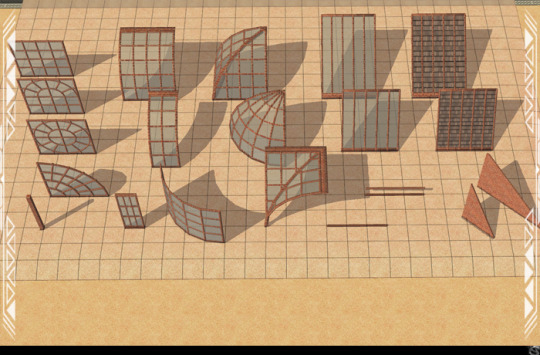
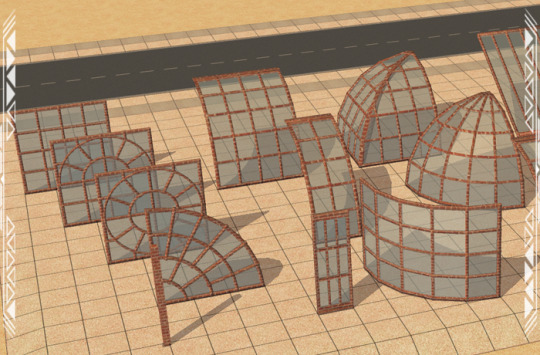
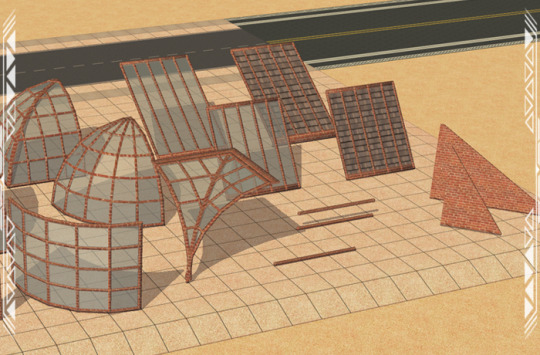
DETAILS
Requires all EPs/SPs.
§300 | Build > Architecture
You need the BBNiche1Master (Buggybooz, 2012), Roofing Repository, and Glass Repository – available in the Repository Pack (Simmons, 2023). Objects are meant to be used with 1-story walls (or higher).
**I decimated the frames a bit to lower poly count. Please forgive minor imperfections – but if you notice serious holes/errors in the meshes, let me know.

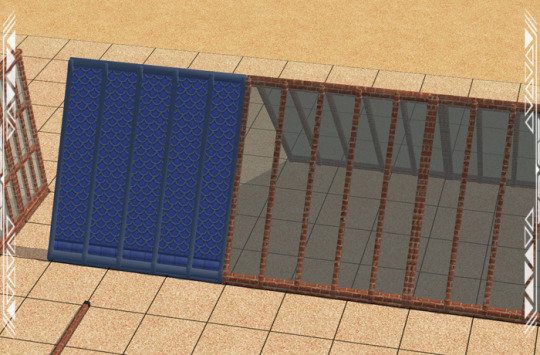
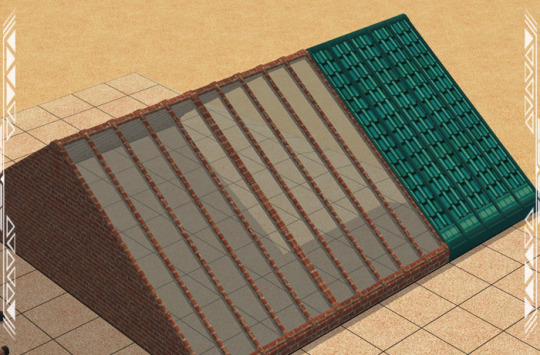
ITEMS
Base 001 (724 poly)
Base 001 Corner (878 poly)
Base 002 (938 poly)
Base 003 (1178 poly)
Corner Niche (20 poly)
Roof 001 (902 poly)
Roof 001 Corner (1038 poly)
Roof 001 (Long) (828 poly)
Roof 002 (841 poly)
Roof 002 Corner (967 poly)
Roof 003-A (704 poly)
Roof 003-B (706 poly)
Roof 003-C (704 poly)
Roof 003-D (706 poly)
Roof 003 Corner (870 poly)
Roof Niche 001 (33 poly)
Roof Niche 002 (33 poly)
Wall Deco 001 (108 poly)
Wall Deco 002 (216 poly)
Window (Deco) (572 poly)
DOWNLOAD (choose one)
from SFS | from MEGA
*collection file included
GRAPHIC GLASS ADD-ONS
from SFS | from MEGA
*separate collection file for add-ons included

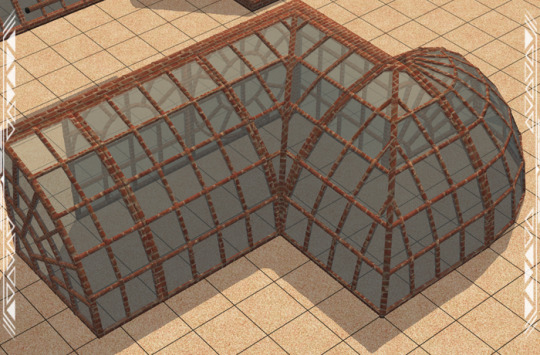
BUILDING TIPS
If you want them to function like walls, combine them with invisible walls, fences, windows, etc. You may need to use the grid on/off cheat to move pieces slightly outside of a four-walled room. Otherwise, the game will consider the object “inside” the room and it will go dark.
Fencing is recommended when placing floor tiles directly above the pieces to reduce flickering. Also, you can fill gaps with Roof Niche 001/002, Wall Deco 001/002, and the Corner Niche.
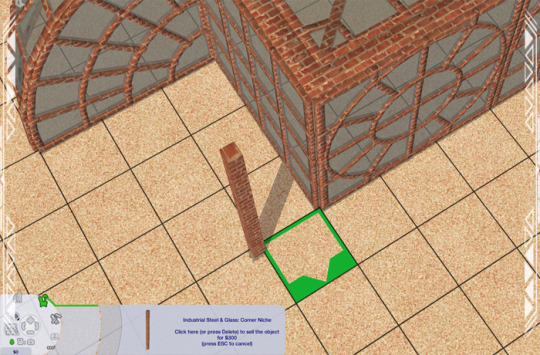
CREDITS
Thanks: Simming and Sketchfab Communities. Sources: Beyno (Korn via BBFonts), EA/Maxis, Industrial Set – Steel & Glass (Feivelyn, 2020 via CCA-Non-Commercial). Nook & Niches (BuggyBooz, 2012), Offuturistic Infographic (Freepik).
378 notes
·
View notes
Note
THE ANTICAPITALIST MESSAGING IN HADESTOWN TOOK ME SO COMPLETELY BY SURPRISE IN SUCH A GOOD WAY AND I HAVEN'T SEEN ENOUGH PEOPLE TALKING ABOUT IT BECAUSE ITS SO GOOD AND IT WORKS WITH THEIR STORY SO WELL
YEAH EXACTLY Im like... is it all just so obvious everyone decided it's redundant to mention or??? HELLO???
And I was sitting in the audience as one does and Chant was actually the song that reframed the entire show for me -- up until then I was like "aw :') theyre falling in love and are doomed, I should google all these lyrics later" but that song just... I felt like I was being hit in the face w a fish, honestly!!
"In the coldest time of year/ Why is it so hot down here?/ Hotter than a crucible/ It ain't right and it ain't natural"
"In the darkest time of year/ Why is it so bright down here?/ Brighter than a carnival/ It ain't right and it ain't natural"
Persephone's lyrics here are so specific -> a "crucible" is an ancient tool that can be used to create art but also industrialized into mass production, a "carnival" something that is inherently about celebration and festivity and joy but it is also a thing that can be commercialized almost beyond recognition. Capitalism is ravenous and will never be satiafied or sated, it will steal & exploit every scrap of art and joy that it can, then corrupt it all into hollow immitations that it then sells back to you on websites like SHEIN and Disney+.
"It ain't right and it ain't natural" hits so hard in this song because nothing is as natural, or as "right", as death -- so obviously Persephone is NOT talking about the literal underworld to the literal god of the dead. She's talking about how we need to stay warm and safe and dry in the winter, but we don't need fresh summer fruits imported from thousands of miles away. We need to stay cool and safe and hydrated in the summer, but we don't need to steal water from another state to keep the golf courses green. The winter is natural, the cold is natural, seeking warmth and light is natural. What is unnatural is this overconsumption, this never ending, never satisfied hunger.
And then of course you have Hades' parts,
Here, I fashioned things of steel/ Oil drums and automobiles/ Then I kept that furnace fed/ With the fossils of the dead
And wasn't it electrifying/ When I made the neon shine!/ Silver screen, cathode ray/ Brighter than the light of day
And obviously "fossils of the dead" is a reference to Hades being the literal god of the dead, in the ground, in the underworld, and it is also a reference to the modern dependence on oil and fossil fuels, but TO ME it is also about how capitalism relies on the exploitation of workers. In this show, the "fossils of the dead" are literally Hades' subjects. They're the workers of his factory town, and he both exploits them and is fully dependent on them, just like how the furnance of industry/capitalism relies on YOUR body, YOUR labor, it eats you when you're alive and it often continues to eat you when you're dead.
And then like "wasn't it electrifying" -> it's EXCITING what technology and industry does, but the problem is the overconsumption and the overproduction ("Brighter than the light of day") beyond what anyone actually needs or even wants. It ain't right and it ain't natural!!!
Every year, it's getting worse/ Hadestown, hell on Earth!
And the wind is so strong/ That's why times are so hard/ It's because of the gods/ The gods have forgotten the song of their love
Lover, what have you become/ Coal cars and oil drums/ Warehouse walls and factory floors/ I don't know you anymore
And it all keeps building in this song, re-emphasizing that Hades is not who he once was, that he has changed. Which again is not only commentary about consumption vs overconsumption, and how so many things started as wonderful ideas that could save people and help people and help make the world better were corrupted and turned into profit machines, killing machines, etc. "The gods have forgotten the song of their love" UGH
I also think the Themes are magnified because this is presented extremely directly alongside Euridyce's growing desperation, especially with the context that Euridyce DOES, in fact, "sell out" to Hades' promises.
There is no food left to find/ It's hard enough to feed yourself/ Let alone somebody else
Desperation forces her hand, she turns to Hades because he offers salvation, and she ends up just another nameless worker turning the gears of his machine. And I feel this is so similar to how when rich people are like "Just do XYZ", or telling people to bootstrap, or selling quick fixes to desperate people, when the reality is they got where they did due to a combination of luck, pre-existing social/monetary capital, etc, and buying into their promises of wealth will only make them richer and you more dependent and vulnerable.
#hadestown#30fishermen#IM JUST ‼️‼️‼️‼️‼️‼️ THIS SHOW...#ask#also btw other hadestown asks i SEE U i just wanna give good responses
62 notes
·
View notes
Text
Rewriting the Hollow Knight of Hazbin Hotel
So, am I the only one who finds it weird that Carmilla isn’t getting jumped by the higher class?
The girl has an arsenal of weapons that can kill Goetia’s members AND neutralize their powers. And she sells it at affordable prices? Stricker can buy those weapons for God’s sake! That’s how he kills Blue Bloods, shouldn't that ring a bell in the Royal Class?
It’s surprising that an uprising hasn't happened yet, some imps managed to build successful businesses (Bliztø, Crimson, Stricker, Barbie I guess?) imagine the disaster if one day they have enough of being treated as lesser and just happen to have enough money to arm a large population of imps.
I intended her to be Velvette's mother, but I changed my plan and turned her into my OC. One thing I don't like about Viv’s Hell is how small it looks. You're telling me that everyone either comes from somewhere in America or Europe, Nifty is the only Asian character, and Cherry Bomb is the only Australian but that’s not enough for me.
Add to that the fact that her POC characters are grey. Or that she simply doesn't add any features/accents that could help the audience guess which origin are her characters.
I know Velvette has an accent but that’s the only character who has one. They should have done more research to make everyone have a dialect at least as unique as Zestial.

Anyways, Carmilla is from South Africa. Don’t get mad at me, Viv’s Hell feels extremely small and I needed multiple POVs to diversify the backstory.
I want my Version of Hell to be a clash of multiple origins, musically speaking you can give the aggressive Spanish guitars to Vaga. Carmilla is associated with Kwela and Soul.
Nomsa Mbatha was born in 1959 and grew to be an impoverished black woman in South Africa during the apartheid, she eventually married gang members to survive.
The Gang was primarily focused on smuggling and economic activities and she participated as a new member when she got married. She partacked in smuggling weapons, drugs, and other contraband into prisons and served as well as an informant gathering intelligence from the outside world and relaying information to gang members in prison or on the streets. Nomsa also provided alibis. All of that is in exchange for protection and money to have a somewhat normal life.
She had her two daughters at 35, the two were twins. Nomsa interchanged between mother and Gang members and, unfortunately, had to bring the girls to do some of the dirty work.
The two girls died with their mother at 20 during a police raid. Nomsa was struck with guilt as she thought she was the reason Odette and Clara went to Hell with her.
In Hell, she renamed herself Induna and used her knowledge to start selling weapons, normal ones at first. Until she started commercializing Blessed Steels.
She didn’t get away with it, she was targeted by many Goetia members scared to lose their position of power since it’s the only thing that can kill them. It’s only through negotiation that she comes up with an arrangement with them with the help of Zestial who’s well-known and respected.
You need to be legally approved (A card to hold one in public) and only royal members have access to it Induna is the exception. The utilization is up to them once purchased.
The weapons are actually mostly harmless to The 72 Lesser Keys of Solomon. It’s the rest of the Goetia, their children who can be killed. The Seven Deadly Sins or The Other Fallen Angels are also safe.
Her employees usually seek the lost Angelic Weapons just right after extermination, they operate during the cleaning of roads and are trained to recognize blessed steel as they can't be noticed with metal detectors. They wear uniforms and it’s usually during these weapons harvesting that people follow them to steal from the company. It’s rare since her workers know how to fight but it happens and a small black market occurred from it, that’s where Stricker got his personal dagger. He also steals from the rich.
Details:
→ Nomsa speaks Zulu and Induna means leader of a group of warriors.
Nomsa means The Mother of Compassion and Mbatha can mean Protector. She’s a mother and the protector of her children.
→ The Twins work for their mother and she insists that they work indoors. One works to design the weapons, and the other tests them. Induna regularly trains them on how to fight and defend themselves.
→ Vaga worked for a few years with Induna and sees herself in her. She keeps her daughter safe the same way she tries to keep her brother out of danger.
My take on human Vaggie → here ←
Appearance:

Watch me fight my biggest enemies, front-facing, and side-profile. I feel like I messed up the head shape in the side profile.
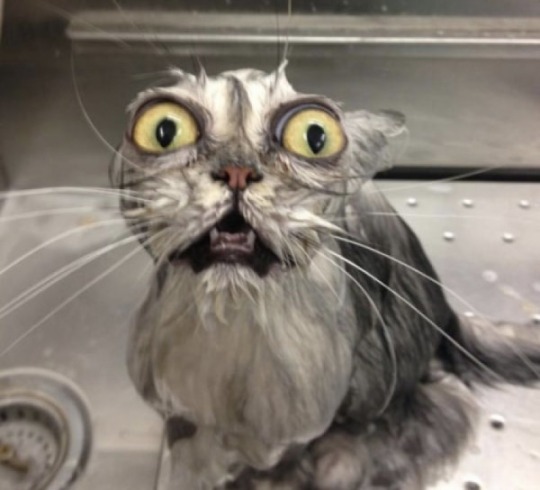
Vivziepop when she learned it’s easy to moisturize and draw POC characters with actual features.
Anyway, I don’t really know what I want to do with her sinner's forms. I think I’m gonna make her a bear because Mommy Bear. I’ll keep the big paws as a way to say she has the weight of the people she killed on her hands. You could say…
“But she never killed anyone.”
Yes, but she still sold weapons that killed people later, willingly participating in a sin will get you to Hell.
That’s all for the rewrite.
#anti vivziepop#hazbin hotel critical#hazbin hotel criticism#vivziepop critical#vivziepop criticism#vivziepop critique#hazbin hotel critique#hazbin hotel rewrite
41 notes
·
View notes
Text
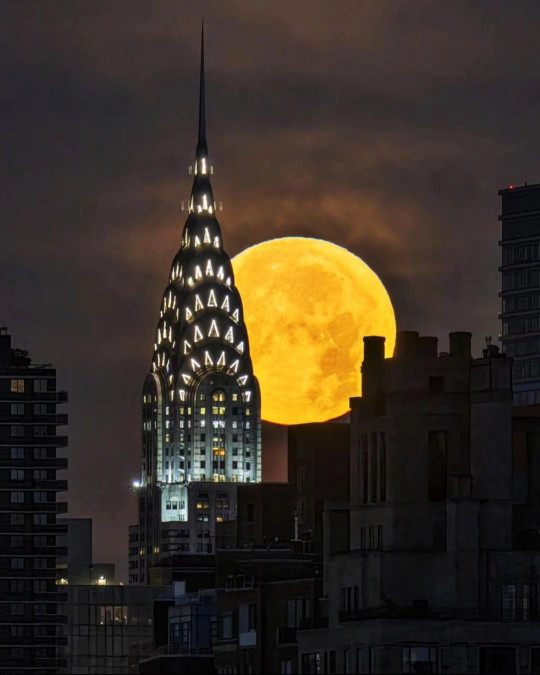
100 Most Fascinating Facts About the Chrysler Building:
1. When was the Chrysler Building built? The construction of the Chrysler Building commenced in 1928 and reached completion in 1930. It was inaugurated on May 27, 1930, amidst the enthusiasm and anticipation of a rapidly evolving New York City.
2. Who designed the Chrysler Building? The architectural genius behind the Chrysler Building is William Van Alen. His innovative vision and meticulous attention to detail are the driving forces behind the building's iconic Art Deco design.
3. Why was the Chrysler Building built? The Chrysler Building was commissioned as the corporate headquarters for the Chrysler Corporation, headed by Walter P. Chrysler. Beyond its practical purpose, it was intended to serve as a symbol of progress, engineering prowess, and the evolving modern age.
4. What is the architectural style of the Chrysler Building? The Chrysler Building stands as an epitome of Art Deco architecture. Characterized by geometric patterns, sleek lines, and decorative elements, this style emerged in the early 20th century as a celebration of technological advancements and modern aesthetics.
5. How tall is the Chrysler Building? The Chrysler Building rises to a height of 1,046 feet (319 meters) including its iconic spire, which contributes significantly to its overall verticality and distinctive appearance.
6. Is the Chrysler Building the tallest in New York City? Although once the tallest in the world, the Chrysler Building is no longer the tallest in New York City, as other skyscrapers, including the Empire State Building and more recently, One World Trade Center, have since surpassed it in height.
7. What materials were used in the construction of the Chrysler Building? The Chrysler Building's frame is primarily composed of steel, providing structural stability and allowing it to reach impressive heights. Its façade is adorned with decorative elements such as stainless steel, limestone, and brick, lending it a visually captivating texture.
8. How long did it take to build the Chrysler Building? The construction process of the Chrysler Building was notably swift for its time, taking approximately two years, from 1928 to 1930, to complete.
9. What is the significance of the terraced crown on the Chrysler Building? The terraced crown of the Chrysler Building serves both an aesthetic and symbolic purpose. Designed in a distinctive stepped style, the crown was inspired by radiator grilles and hubcaps of automobiles, paying homage to the prominence of the automobile industry in the 1920s.
10. Can you visit the top of the Chrysler Building? No, access to the upper floors, including the iconic crown, is typically restricted to building personnel due to security and logistical reasons.
11. Is the Chrysler Building open to the public? While the upper floors are not accessible to the public, visitors can appreciate the building's exterior and visit the lobby, which features exquisite Art Deco detailing.
12. What businesses or offices are located in the Chrysler Building? While the Chrysler Building was constructed as a corporate headquarters, its interior spaces have housed various offices and businesses over the years, contributing to its commercial importance.
13. What is the address of the Chrysler Building? The Chrysler Building is situated at 405 Lexington Avenue, New York City, standing as a testament to its strategic central location within the bustling metropolis.
14. How does the Chrysler Building compare to other famous skyscrapers? The Chrysler Building is renowned for its striking Art Deco design, setting it apart from other iconic skyscrapers like the Empire State Building and One World Trade Center, each contributing uniquely to New York's skyline.
15. Was the Chrysler Building the tallest building in the world at any point? Yes, the Chrysler Building proudly held the title of the world's tallest building upon its completion in 1930, towering over the cityscape and symbolizing mankind's architectural achievements.
16. How has the Chrysler Building influenced architecture? The Chrysler Building's innovative Art Deco design, intricate ornamentation, and graceful vertical lines have left an indelible mark on architecture, inspiring subsequent skyscraper designs and influencing the broader Art Deco movement.
17. Are there any replicas or similar buildings to the Chrysler Building? While there are no exact replicas, the Chrysler Building's design has inspired other structures worldwide, particularly during the Art Deco era.
18. What is the cost of the Chrysler Building's construction? The construction of the Chrysler Building, an ambitious endeavor, carried a price tag of approximately $20 million during the late 1920s.
19. Are there any notable events associated with the Chrysler Building? The Chrysler Building's completion coincided with the Great Depression, impacting its initial occupancy and economic viability. It weathered the challenges of its time, reflecting the resilience of New York City.
20. How has the Chrysler Building been depicted in popular culture? The Chrysler Building has graced the silver screen, adorned book covers, and inspired countless artworks, becoming an enduring symbol of urban aspiration and sophistication.
21. What is the significance of the eagle gargoyles on the Chrysler Building? The eagle gargoyles perched on the corners of the 61st floor serve as potent symbols of ambition, freedom, and the American spirit, echoing the prevailing sentiment of progress during the 1920s.
22. Are there any special lighting or illumination features on the Chrysler Building? The Chrysler Building's crown has been illuminated with various colors during festive occasions, infusing its majestic form with a vibrant aura that captivates onlookers.
23. How did the Great Depression impact the Chrysler Building's construction? The Great Depression cast a shadow over the initial occupancy of the Chrysler Building, challenging its financial viability as economic difficulties prevailed during its early years.
24. Is the Chrysler Building considered Art Deco? Yes, the Chrysler Building is an iconic representation of the Art Deco architectural movement, characterized by its sleek geometric forms and lavish ornamentation.
25. What is the history of the land on which the Chrysler Building stands? The land on which the Chrysler Building proudly stands was leased from the Cooper Union for the Advancement of Science and Art, reflecting a collaborative endeavor between commerce and education.
26. What other works of the architect William Van Alen are noteworthy? While the Chrysler Building is his magnum opus, William Van Alen's contributions extend to other notable structures in New York City, further enriching the city's architectural landscape.
27. Are there any myths or legends associated with the Chrysler Building? While not enveloped in myths, the Chrysler Building's remarkable design and history have woven it into the fabric of New York's urban legends and tales.
28. Can you see the Chrysler Building from other parts of New York City? Owing to its lofty height and strategic location, the Chrysler Building commands panoramic views, rendering it visible from numerous vantage points across the city.
29. Has the Chrysler Building undergone any major renovations? The Chrysler Building has experienced various restoration and maintenance efforts aimed at preserving its historic grandeur and safeguarding its structural integrity.
30. How does the Chrysler Building contribute to New York City's skyline? The Chrysler Building's distinctive silhouette, crowned by its terraced design and decorative elements, contributes a sense of elegance and history to New York City's iconic skyline.
31. What makes the Chrysler Building unique compared to other skyscrapers? The Chrysler Building's Art Deco flair, intricate detailing, and its pursuit of vertical elegance set it apart, positioning it as a timeless architectural masterpiece.
32. How did the Chrysler Building get its name? Named after the visionary Walter P. Chrysler, founder of the Chrysler Corporation, the building serves as a tribute to his influence and contributions to the automotive industry.
33. What was the original purpose of the Chrysler Building? The Chrysler Building was initially conceived as the headquarters for the Chrysler Corporation, reflecting the ambitions of its namesake to establish a prominent presence in New York City.
34. How many floors does the Chrysler Building have? The Chrysler Building boasts 77 floors, including both functional office spaces and levels dedicated to mechanical operations.
35. How is the interior of the Chrysler Building designed? The interior of the Chrysler Building, while less famous than its exterior, exhibits Art Deco influences through meticulous detailing, marble elements, and geometric patterns.
36. Are there any environmental or sustainability features in the Chrysler Building? Given its construction during a different era, the Chrysler Building lacks modern sustainability features. However, retrofitting efforts have aimed to enhance energy efficiency.
37. What challenges were faced during the construction of the Chrysler Building? The rapid construction timeline posed challenges in coordinating intricate design elements, managing resources, and aligning with financial constraints, all while adhering to safety standards.
38. Who owns the Chrysler Building today? The ownership of the Chrysler Building has shifted over time. In recent years, it was owned by the Abu Dhabi Investment Council and managed by Tishman Speyer, but ownership arrangements may evolve.
39. Has the Chrysler Building been featured in any films or TV shows? The Chrysler Building's distinctive appearance has graced the backgrounds of numerous films and TV shows, solidifying its status as an enduring cultural icon.
40. What role did Walter P. Chrysler play in the building's design? Walter P. Chrysler's vision, ambition, and financial backing were instrumental in turning the architectural vision of the Chrysler Building into a towering reality.
41. Are there any guided tours of the Chrysler Building? While access to the upper levels is usually restricted, the lobby and its Art Deco features have been open for guided tours, allowing visitors to glimpse its interior beauty.
42. How has the perception of the Chrysler Building changed over time? The perception of the Chrysler Building has transformed from being a symbol of corporate prominence to a revered architectural gem, embodying the essence of an era.
43. What is the symbolism behind the Chrysler Building's decorations? The decorations, inspired by automobile motifs and Art Deco designs, symbolize progress, innovation, and the forward-looking spirit of the 1920s.
44. How did the public react to the Chrysler Building when it was completed? The public marveled at the Chrysler Building's height, design, and the testament it stood as to human achievement, particularly during a time of rapid technological advancements.
45. Are there any famous photographs or artworks featuring the Chrysler Building? Countless photographs and artworks capture the Chrysler Building's grace and grandeur, immortalizing it in the visual history of New York City.
46. How does the Chrysler Building represent the Roaring Twenties? The Chrysler Building encapsulates the exuberance and optimism of the Roaring Twenties, echoing the era's love for innovation, luxury, and bold statements.
47. What is the current use of the Chrysler Building's interior spaces? The interior spaces of the Chrysler Building have been used for offices and commercial purposes, maintaining its role as a business hub within the city.
48. Are there any famous quotes about the Chrysler Building? Various luminaries have waxed eloquent about the Chrysler Building, with descriptions highlighting its elegance, grace, and architectural significance.
49. How did the Chrysler Building impact the history of skyscrapers? The Chrysler Building marked a turning point in skyscraper design, pushing the boundaries of architectural innovation and contributing to the evolution of cityscapes worldwide.
50. What is the role of the Chrysler Building in New York's history? The Chrysler Building serves as a touchstone in New York's history, representing an era of technological leaps, urban ambition, and architectural creativity.
51. How does the Chrysler Building contribute to Manhattan's cityscape? Amidst the modern skyscrapers, the Chrysler Building's graceful curvature and Art Deco embellishments offer a nostalgic touch to Manhattan's dynamic cityscape.
52. Has the Chrysler Building ever been sold or changed ownership? The Chrysler Building's ownership has shifted over time due to various financial transactions, illustrating its status as a sought-after asset.
53. Are there any plans for the future of the Chrysler Building? Future plans for the Chrysler Building are subject to ownership decisions, potential renovations, and urban development trends.
54. How do architects and designers view the Chrysler Building today? Architects and designers continue to admire the Chrysler Building as a paragon of Art Deco brilliance, studying its design principles and innovative approach.
55. What is the relationship between the Chrysler Building and the Empire State Building? The Chrysler Building and the Empire State Building shared a fierce rivalry during their respective constructions, both vying for the title of the world's tallest building.
56. Has the Chrysler Building won any awards for its architecture? While not awarded a specific architectural prize, the Chrysler Building's enduring popularity and architectural significance stand as its ultimate accolades.
57. What role did the construction unions play in the building's creation? Construction unions played a vital role in the building's realization, contributing their expertise, labor, and craftsmanship to the project.
58. Are there any hidden details or Easter eggs in the Chrysler Building's design? While not widely known, it's possible that the Chrysler Building's design conceals subtle details or symbolic elements that may hold hidden meanings.
59. How does the Chrysler Building look at night? Illuminated against the night sky, the Chrysler Building exudes a magical aura, showcasing its graceful spire and crown in all their splendor.
60. How has technology influenced the preservation of the Chrysler Building? Technological advancements have facilitated the ongoing maintenance and preservation efforts, enabling the building's distinctive features to be upheld for future generations.
61. What role did William H. Reynolds play in the Chrysler Building's construction? William H. Reynolds served as the general contractor overseeing the meticulous execution of the Chrysler Building's construction.
62. Are there any safety features incorporated into the Chrysler Building's design? While the safety standards of its time were adhered to, modern safety features have been integrated into the building over the years to ensure the well-being of occupants and visitors.
63. What is the architectural legacy of the Chrysler Building? The Chrysler Building's architectural legacy lies in its role as a global symbol of Art Deco elegance, inspiring architects and enthusiasts alike with its groundbreaking design.
64. How did the Chrysler Building impact the surrounding neighborhood? The presence of the Chrysler Building contributed to the transformation of its Midtown Manhattan neighborhood, attracting commerce, visitors, and further development.
65. How has the Chrysler Building's perception changed since its completion? From its initial role as a symbol of corporate might, the Chrysler Building has evolved into a cultural icon, celebrated for its architectural brilliance and historical importance.
66. Can you see the Chrysler Building from Central Park? Yes, parts of the Chrysler Building are visible from certain viewpoints within Central Park, showcasing its elegance against the urban backdrop.
67. How did the Chrysler Building's construction impact the economy? The construction of the Chrysler Building provided a crucial source of employment during the challenging economic climate of its time, offering jobs and stimulating local economy.
68. What was the tallest building before the Chrysler Building was constructed? Prior to the Chrysler Building's completion, the Woolworth Building held the distinction of being the world's tallest building.
69. What are some interesting anecdotes about the Chrysler Building's history? Anecdotes include the competitive race with the Empire State Building for height supremacy and the influence of the automotive industry on its design.
70. How has the Chrysler Building remained relevant in modern times? The Chrysler Building's timeless design, combined with its status as an architectural icon, has allowed it to transcend time and maintain its relevance.
71. What engineering innovations were used in the construction of the Chrysler Building? The Chrysler Building utilized innovative techniques like riveting and a steel framework to achieve its impressive height, setting new standards for skyscraper construction.
72. How has the exterior of the Chrysler Building been maintained? The exterior has been subject to periodic restoration efforts to preserve its distinctive Art Deco ornamentation and maintain its visual impact.
73. What is the role of the Chrysler Building in celebrating Art Deco? The Chrysler Building stands as a prime exemplar of Art Deco architecture, celebrating the movement's emphasis on geometric forms and luxurious detailing.
74. How has the Chrysler Building's fame influenced tourism in New York? The Chrysler Building, along with other iconic landmarks, has undoubtedly contributed to New York's allure as a global tourist destination.
75. Are there any architectural controversies related to the Chrysler Building? The Chrysler Building isn't associated with major architectural controversies, but its height race with the Empire State Building sparked competitive debates.
76. How has the Chrysler Building's architecture influenced other structures? The Chrysler Building's Art Deco style has served as a muse, inspiring subsequent architects to incorporate elements of its elegance into their designs.
77. Can you see the Chrysler Building from the Statue of Liberty? While quite a distance separates the Statue of Liberty and the Chrysler Building, the latter's towering presence allows it to be visible from various viewpoints.
78. Are there any restoration projects planned for the Chrysler Building? Restoration initiatives may be undertaken to ensure the preservation of the building's historical and architectural significance, although specific plans can vary.
79. What are the architectural details of the Chrysler Building's lobby? The lobby features marble walls, geometric patterns, and ornate decorations that echo the building's overall Art Deco aesthetic.
80. How has the Chrysler Building survived natural disasters and weathering? The building's sturdy construction has enabled it to withstand weathering and minor natural events, showcasing the enduring quality of its design and materials.
81. What role does the Chrysler Building play in the history of New York real estate? The Chrysler Building played a role in shaping the landscape of New York's real estate sector, adding a touch of elegance and verticality to the city's skyline.
82. How did the construction of the Chrysler Building impact local employment? The construction of the Chrysler Building provided jobs during a period of economic uncertainty, offering employment opportunities for workers in the construction industry.
83. Can you see the Chrysler Building from Times Square? Yes, certain vantage points in Times Square offer views of the Chrysler Building, contributing to the city's vibrant visual tapestry.
84. How does the Chrysler Building symbolize New York's ambition? The Chrysler Building stands as a symbol of New York's unyielding ambition and its continuous drive to push the boundaries of architecture and engineering.
85. What is the role of the Chrysler Building in the city's identity? The Chrysler Building has become an integral part of New York's identity, representing its aspirations, innovation, and architectural excellence.
86. How has the Chrysler Building influenced the aesthetics of modern skyscrapers? The Chrysler Building's Art Deco elements have left an indelible imprint on the aesthetics of skyscrapers, impacting subsequent designs with its unique flair.
87. What role did the automobile industry play in the creation of the Chrysler Building? The building's design, with its automobile-inspired motifs, pays homage to the automotive industry, reflecting the era's technological advancements.
88. How does the Chrysler Building stand out among Manhattan's skyscrapers? The Chrysler Building's ornate crown, intricate detailing, and Art Deco embellishments set it apart, granting it a sense of timeless elegance within the skyline.
89. What impact did the Chrysler Building have on the Art Deco movement? The Chrysler Building is considered a pinnacle of the Art Deco movement, influencing subsequent Art Deco architecture and contributing to its popularity.
90. How has the Chrysler Building's lighting been updated over the years? The lighting of the Chrysler Building has evolved with technological advancements, offering dynamic displays and illuminations during special events and celebrations.
91. Can you see the Chrysler Building from Brooklyn? Yes, the towering presence of the Chrysler Building can be seen from various parts of Brooklyn that have unobstructed sightlines toward Manhattan.
92. How does the Chrysler Building compare to other landmarks like the Flatiron Building? While both are iconic, the Chrysler Building's height and distinct Art Deco style differentiate it from the Flatiron Building, which has its own historical significance.
93. What are some lesser-known facts about the Chrysler Building? Lesser-known facts include its rapid construction time, William Van Alen's competitive nature, and the role of car motifs in its design.
94. How has the Chrysler Building been depicted in architectural literature? Architectural literature has often highlighted the Chrysler Building's architectural significance, its role in the Art Deco movement, and its influence on skyscraper design.
95. What role did the Chrysler Building play in the city's skyline competition? The Chrysler Building's race for height supremacy with the Empire State Building epitomized New York's ambition and fierce competition during its construction.
96. How does the Chrysler Building embody the spirit of the 1920s? The Chrysler Building captures the exuberance and dynamism of the 1920s through its groundbreaking design, reflecting the era's technological advancements.
97. What was the public's reaction to the Chrysler Building's completion? The public responded with awe and admiration, considering the Chrysler Building a symbol of human achievement, modernity, and progress.
98. How have preservation efforts impacted the Chrysler Building's future? Preservation efforts ensure that the Chrysler Building's architectural and historical significance remain intact, safeguarding its place in New York's skyline.
99. Can you see the Chrysler Building from the One World Trade Center? Yes, the One World Trade Center offers sweeping views of Manhattan, allowing visitors to behold the iconic Chrysler Building amidst the city's panorama.
100. How has the Chrysler Building inspired artists and creatives over the years? The Chrysler Building's distinctive silhouette, elegant design, and historical significance have captivated artists, photographers, writers, and filmmakers, becoming a muse for creative expression. Its enduring presence in various artistic mediums speaks to its lasting impact on culture and imagination.
Previous page Chrysler Building Next page
#new york city#newyork#new york#new-york#manhattan#nyc#ny#urban#city#usa#United States#buildings#travel#journey#outdoors#street#architecture#visit-new-york.tumblr.com#Chrysler Building
308 notes
·
View notes
Text

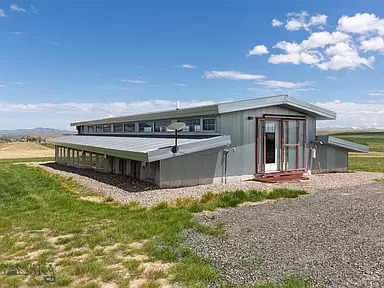

Even though it's constructed of thick concrete-insulated walls, built into the hillside, concrete floors, steel I beams, and custom made steel doors, it still has lots of glass and is above ground, so how can it be an apocalypse house? Built in 2004 in Willow Creek, Montana, it has 1bd (screw everyone else), 2ba, $850K.

Greenhouse has a glass ceiling and contamination can creep into the soil.

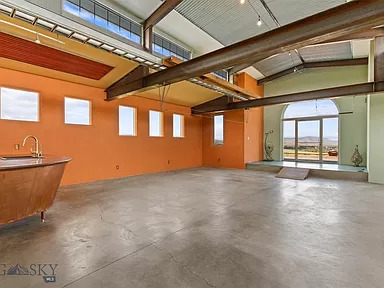
I just don't get this house.



Huge living room/kitchen space. This structure in the corner is the kitchen.

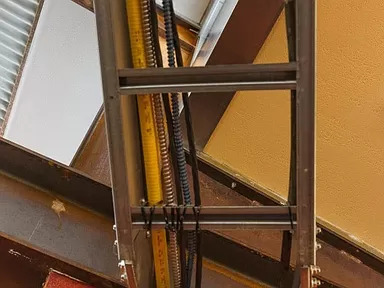
Not sure what this is above the kitchen.
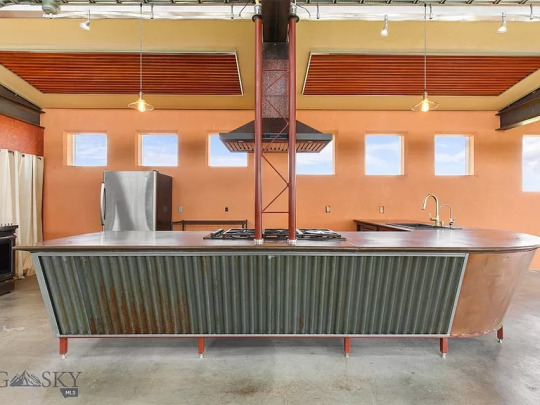


Behind the kitchen counter. This is seriously industrial.



Combination bath/utility room.
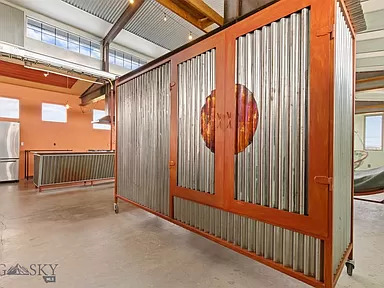
Storage cabinet on wheels acts as a divider between the bedroom and living area.



A rear entrance has a small lofted area and goes down to the bedroom.
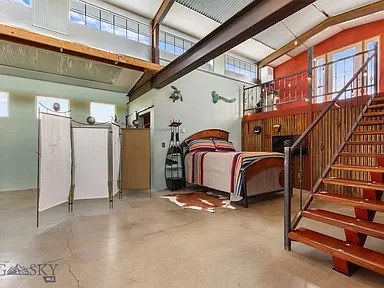
Entrance to bath #2 is behind the screen.

Industrial style farm doors.


The 2nd bath is a shower room.
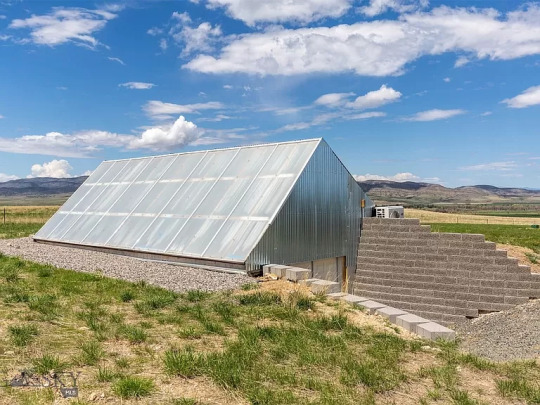
I don't know what this building is, but it's partially underground.


40x60 shop on the property has a separate 500-gallon propane tank.

The grain silo is an art studio that comes equipped with 2 kilns.
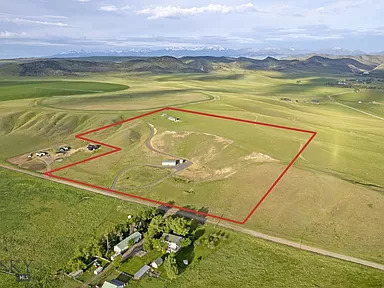
27.87 acres. There are no restrictive covenants or zoning, so you have the freedom for multiple uses including, but not limited to, commercial, industrial, recreational, agricultural, small business, residential, and farming.
95 notes
·
View notes
Text
Modification
I want to share a little project I've been working on this past week. It may seem like nothing, but it was a lot of work and a big pain until I got it done.
Back when my spouse and I moved into our current house, I immediately recognized a dearth of counter space in the kitchen. We resolved this by purchasing a buffet table from Ikea. The table in question was a "Norden" model, which they have since discontinued. Simple enough table, a bit over a meter long and maybe a third that in depth, two drawers and two additional shelves. Great for holding kitchen appliances on top and storage below.
The first thing I did was add locking casters to the bottom so I could move it around easily. That's been a big bonus, as it makes cleaning much easier. I also put some hooks on the ends to hang my cast iron pans.
The problem arose I guess about three years ago when I upgraded to a commercial-grade espresso machine. The Gaggia was okay, but the Expobar is in a completely different class. And that's GREAT for good coffee. For a tabletop that's made of laminated particle board? Not so much.

Now, I had been aware of this problem for a while. I'd tried to ameliorate it by putting a silicone baking mat on top of that side of the table; that slowed down the deterioration, but did not stop it. It was also a daily annoyance, as the espresso machine moved a bit when I torqued the portafilter in place and it would get bunched up. About once a week I would have to lift the espresso machine and move things back.
This came to a head two weeks ago when I took the espresso machine in for some repairs and had to face that the tabletop was ruined. My initial thought was to get a replacement top from Ikea and then put maybe a piece of stone countertop in where the espresso machine sits.
This ran into two problems. First, as I mentioned before, this particular item is discontinued. Ikea will honor the warranty, and the Ikea rep tried pretty hard to make that work, but the reality is I got it too long ago and whatever abuse it's undergone is my problem; they don't sell the parts for it anymore.
Second, stone countertops are EXPENSIVE. While I just want what might be considered scrap, it was still going to be a lot of money, and I was not able to find a source.
Eventually I want to replace the entire thing with something I build myself, and I have some ideas for that. However, right now I have neither the time nor skill to make that happen. I was going to have to replace the top myself.
Since I didn't want to pay for stone, I opted for metal. I ordered a 4'x2' sheet of metal from McMaster and proceeded to prep the top. I sanded down the areas which were bubbling up and roughed up the rest of the surface.

Then, once the metal arrived I used my angle grinder to cut it to width and round the sharp corners. I had this notion that I might bend it over the top and maybe nail it down, or see if I could knurl the edges. However, while I think that was maybe possible, to do it well would have called for tools I don't have and skills I generally lack. The steel was 0.03" thick rolled mild steel. While that's not exactly a knife's edge, and you can touch it without cutting yourself, it's not exactly safe. And although I got much better with the angle grinder in the process (I had a grinder and hardly ever used it), the cut edges were a but uneven. So, I ordered some rubber edging.
In the meantime, I put the metal on the buffet table and prepared it.

I opted for a matte finish, since I would need better buffing tools than I have to get a mirror finish, and matte is easier to maintain than brushed. Since it's mild steel - which rusts easily - I sealed it with a spray lacquer.
Today, the rubber edging finally arrived. This is the same stuff you have on the edges of your car door. I glued it in place, except for one small section which is removable so I can easily clean detritus like coffee grounds off the table top. I also added two receivers to hold the feet of the espresso machine so it doesn't move when I put in the portafilter.

And, behold!
The result looks almost nothing like the original buffet table from Ikea. Someday I'll make something better, but whatever I make will be strongly informed by this, which has been heavily modified to fit my use case.
14 notes
·
View notes
Text
Batman: Shadows Of Laughter (part 1)
A fan fiction by Ecky
**Disclaimer:**
"Shadows of Laughter" is a non-commercial fan fiction story created by and for fans of the Batman franchise. This work is not affiliated with, endorsed, or approved by DC Comics, Warner Bros. Entertainment, or any other official entities associated with Batman and related characters. All characters such as Batman, Joker, Harley Quinn, and other original creations appearing in this story are the property of their respective trademark and copyright holders.
The original characters of Ms. Racey Rhymes, Revan, Hannah, Sarah, and Maxwell Pride are creations of the author and any resemblance to actual persons, living or dead, or other fictional characters, is purely coincidental.
This story is intended solely for entertainment purposes and is not for commercial use. No infringement of copyright or trademark is intended.
The Characters:
Batman as himself

Comissioner Gordan as himself

@raceyrhymes as Ms Rhymes

@samcrosfaith as Revan (might come across as a man but is a woman under the mask and costume, a goth chick)

@solesofwonder as Hannah and Sarah

@horrorseventhree as Maxwell Pride

The night air in Gotham City carried a chill that seemed to seep into the very bones of its inhabitants. High above the bustling streets, perched on a gargoyle adorning one of the city's countless Gothic spires, a dark figure surveyed the urban sprawl below. Batman, the city's vigilant guardian, scanned the horizon with eyes that missed nothing.
His comm unit crackled to life. "Batman, we've got another one," came the gruff voice of Commissioner Gordon. "You're gonna want to see this."
Without a word, Batman leapt from his perch, his cape billowing out behind him as he glided towards the source of the disturbance. The night was young, but already it promised to be a long one.
Minutes later, he touched down in front of Gotham National Bank, where a scene of controlled chaos awaited him. Police cruisers formed a perimeter around the building, their lights painting the street in alternating flashes of red and blue. Officers milled about, their faces a mix of confusion and grim determination.
Commissioner Gordon stood near the entrance, his trench coat pulled tight against the chill. As Batman approached, Gordon's mustache twitched in a mirthless smile. "Glad you could make it," he said, his voice low. "This one's... different."
Batman's eyes narrowed behind his cowl. "Different how?"
Gordon gestured towards the bank's entrance. "See for yourself."
As they stepped inside, the acrid smell of gunpowder mingled with something sweeter, almost cloying. The bank's marble floor was littered with playing cards, each one bearing the unmistakable grinning visage of the Joker. But it was the walls that commanded attention.
Written in what appeared to be purple spray paint, a message sprawled across the pristine surface:
"In this den of greed and gold,
A jester's tale begins to unfold.
With laughter and chaos, I'll make my mark,
Gotham's new nightmare in the dark."
Batman's jaw clenched. "The Joker?"
Gordon shook his head. "That's the thing. We know for a fact that the Joker's locked up tight in Arkham. This is someone new."
As they moved deeper into the bank, the extent of the carnage became clear. Bodies lay strewn about, their faces frozen in grotesque smiles. But there was something off about them.
Batman knelt beside one of the victims, examining the rictus grin. "These aren't the Joker's usual toxins," he muttered. "The chemical composition is different. More refined."
"Great," Gordon sighed. "So we've got a Joker copycat with an upgraded formula. Any other good news?"
Batman stood, his cape settling around him like a shroud. "The vault," he said simply, striding towards the massive steel door at the back of the bank.
The vault stood open, its contents emptied. But on the inside of the door, another message awaited:
"With rhyme and reason, I'll steal your wealth,
While Gotham's protector grasps at stealth.
Can you catch a shadow, Dark Knight so brave?
Or will my laughter be this city's grave?"
Gordon ran a hand through his graying hair. "Poetry? Since when does the Joker write poetry?"
"He doesn't," Batman replied, his voice grim. "This is someone new. Someone who wants us to think it's the Joker, but is leaving deliberate clues that it isn't."
As if on cue, a bank teller who had been huddling in the corner suddenly sprang to his feet, his eyes wild and unfocused. "The laughter!" he cried out. "Can't you hear it? It's everywhere!"
Before anyone could react, the man began to convulse, his body twisting in unnatural angles. And then, to the horror of all present, he began to laugh. It started as a low chuckle but quickly grew into a full-throated cackle that echoed off the marble walls.
Batman moved swiftly, catching the man as he collapsed. But it was too late. The laughter died away, leaving only the eerie silence of the crime scene.
"We need to get these bodies to the lab," Batman said, his voice tight with controlled anger. "And I want a full analysis of every chemical trace in this building."
Gordon nodded, already barking orders to his officers. As the scene buzzed with activity, Batman slipped away, melting into the shadows of the night.
* * *
In the Batcave, the soft hum of computers and the occasional screech of bats provided a backdrop to Bruce Wayne's intense concentration. He stood before a large screen, cowl pulled back, brow furrowed as he pored over the data from the bank heist.
"Master Bruce," Alfred's cultured tones cut through the silence. "Perhaps a spot of tea might help clear the cobwebs?"
Bruce turned, a ghost of a smile touching his lips. "Thanks, Alfred, but I don't think tea is going to solve this one."
Alfred set the tray down regardless. "Perhaps not, sir, but it certainly can't hurt. Have you made any progress in identifying our poetic miscreant?"
Bruce shook his head, frustration evident in every line of his body. "The chemical analysis came back inconclusive. It's similar to Joker toxin, but with key differences. Whoever created this is brilliant, possibly on par with the Joker himself."
"A disturbing thought," Alfred mused. "And what of the victims?"
"All dead," Bruce said grimly. "The new toxin works faster than the Joker's, and it's more potent. But that's not the strangest part." He pulled up an image on the screen, showing a close-up of one of the victim's faces. "Look at the musculature around the mouth."
Alfred leaned in, his eyes widening slightly. "Good heavens. It almost appears as if..."
"As if they were trying not to smile," Bruce finished. "This toxin doesn't just force the victims to laugh. It's almost as if it's fighting against their will, forcing the body to betray itself."
The computer beeped, signaling an incoming transmission. Bruce pulled his cowl back on as Commissioner Gordon's face appeared on the screen.
"Batman, we've got another one," Gordon said without preamble. "Gotham Museum of Modern Art. You're not going to believe this."
"I'm on my way," Batman replied, already moving towards the Batmobile.
As the sleek vehicle roared out of the cave, Bruce's mind raced. Two heists in one night, both bearing the hallmarks of the Joker, yet undeniably different. Something big was brewing in Gotham, and he had a sinking feeling that this was only the beginning.
* * *
The Gotham Museum of Modern Art stood as a beacon of culture amidst the city's often grim landscape. Tonight, however, it was a crime scene that defied explanation.
As Batman approached, he immediately noticed something was off. The police lights seemed dimmer than usual, and there was an eerie quiet surrounding the building. Commissioner Gordon met him at the entrance, his face pale.
"I've never seen anything like this," Gordon said, his voice barely above a whisper. "It's... you have to see it for yourself."
They stepped inside, and Batman felt a chill that had nothing to do with the night air. The entire museum had been transformed. Every painting, every sculpture, had been altered to include a twisted, grinning face. But it wasn't the Joker's face – it was softer, more feminine, yet no less terrifying.
And everywhere, there was poetry. Lines of verse scrawled across walls, floors, even across the faces of the altered artworks:
"In halls of beauty, I leave my mark,
A canvas of chaos, a masterpiece dark.
Can you solve my riddle, oh Dark Knight so grim?
Or will Gotham fall to her, not to him?"
Batman's eyes narrowed. "Her?"
Gordon nodded grimly. "That's not all. Follow me."
They made their way to the center of the museum, where a macabre scene awaited them. The security guards and night staff had been arranged in a grotesque tableau, their bodies contorted into unnatural poses, faces frozen in those horrible, forced smiles. But at the center of it all was something that made even Batman's blood run cold.
A woman sat in a chair, her body relaxed as if merely resting. But her face – her face was a mask of pure terror, eyes wide and mouth open in a silent scream. And carved into her forehead were two words: "Poetic Justice."
"She's alive," Gordon said softly. "Catatonic, but alive. The only survivor we've found so far."
Batman knelt beside the woman, examining her closely. "This isn't random," he muttered. "She was chosen specifically. But why?"
As if in answer, a nearby screen flickered to life. The face that appeared was hidden behind a mask – white, with delicate purple lines tracing a feminine face. Red lips curved into a smile that sent chills down the spines of all who saw it.
"Hello, Gotham," the figure purred, her voice a melodic contralto. "Did you miss me? Oh wait, you didn't even know I existed, did you? Allow me to introduce myself. You can call me... Ms. Racey Rhymes."
She giggled, the sound eerily reminiscent of the Joker's infamous laugh, yet distinctly her own. "I hope you've enjoyed my little exhibitions so far. Consider them my audition for the role of Gotham's new maestro of mayhem. The Joker? Oh, he's so last season. It's time for a new act, don't you think?"
Her eyes seemed to lock onto the camera, and by extension, onto Batman himself. "I know you're watching, Dark Knight. Are you intrigued? Puzzled? Oh, I do hope so. Because this is just the overture, my dear. The real performance is yet to come."
She leaned in close, her masked face filling the screen. "Can you hear it, Batman? The rhythm of chaos, the melody of madness? It's coming for Gotham, and not even you can stop it. So put on your dancing shoes, darling. Because when the music starts, we're all going to dance."
The screen went dark, leaving the museum in eerie silence.
Batman stood, his mind racing. This was unlike anything he had faced before. A new player had entered the game, one who combined the Joker's flair for the theatrical with a poetic sensibility that was both beautiful and terrifying.
"Commissioner," he said, his voice low and intense, "I need everything you have on this woman. Bank records, security footage, witness statements – anything that might give us a clue to her identity or her next move."
Gordon nodded, already pulling out his phone to make the necessary calls. "What are you thinking, Batman? Who is she?"
Batman's gaze swept the room, taking in the altered artworks, the grotesque tableau of bodies, the lone survivor with her terrifying message. "Someone who's been watching Gotham for a long time," he said grimly. "Someone with resources, intelligence, and a deep-seated grudge. This isn't just about chaos or money. This is personal."
As he turned to leave, Batman's eyes fell on a small card that had fluttered to the ground. He picked it up, turning it over in his gloved hand. It was a business card for Maxwell Pride, one of Gotham's most prominent – and controversial – business moguls.
"Get me everything you can on Maxwell Pride," Batman said, tucking the card away. "I have a feeling he's connected to this somehow."
As he stepped out into the night, Batman couldn't shake the feeling that Gotham was standing on the precipice of something truly terrifying. Ms. Racey Rhymes was out there, plotting her next move, and he had a sinking feeling that this was only the beginning of her twisted poem.
The game was afoot, and the stakes had never been higher. As he grappled to the rooftops, Batman's determination solidified into iron resolve. He would solve this riddle, unravel this rhyme, and bring Ms. Racey Rhymes to justice – before Gotham descended into a chaos from which it might never recover.
*****
The warehouse was a study in contrasts. Outside, it blended seamlessly into Gotham's industrial district, a nondescript building among many. Inside, however, it was a riot of color and chaos that would have made the Joker himself green with envy.
At the center of this maelstrom sat Ms. Racey Rhymes, her feet propped up on an antique desk that looked wildly out of place in the warehouse setting. Her toes, painted a vivid purple, wiggled slightly as she regarded the man standing before her. To her left and right, a pair of muscular goons stood at attention, their faces painted with grotesque smiles that didn't quite reach their eyes.
Ms. Rhymes herself was a vision of calculated madness. Her hair, dyed in alternating streaks of green and purple, cascaded over her shoulders. She wore a tailored suit that seemed to shift between deep purple and midnight blue depending on how the light hit it. But it was her face that commanded attention – pale as moonlight, with lips painted a vivid red and eyes that sparkled with equal parts intelligence and insanity.
"So," she purred, her voice a melody that danced on the edge of reason, "you're the infamous Revan. I must say, you cut quite the imposing figure."
The man before her stood silent, his face hidden behind a mask that was featureless save for a pair of narrow eye slits. He wore a long, dark trench coat that seemed to absorb the light around it. In his hand, he held a baseball bat, its surface marred by scratches and what looked suspiciously like bloodstains.
Ms. Rhymes leaned forward, her eyes glittering. "Not much for conversation, are you? That's quite alright. I prefer my hired help to be more... action-oriented."
She snapped her fingers, and one of her goons stepped forward, placing a thick envelope on the desk. "Your advance," she explained. "Half now, half upon completion. Assuming, of course, that you're up to the task."
Revan remained motionless for a moment, then reached out and took the envelope. His voice, when he finally spoke, was a low growl that seemed to emanate from the depths of his mask. "The task?"
Ms. Rhymes' smile widened, becoming something feral and dangerous. "Why, bringing me the Batman, of course. Alive, mind you. I have... plans for our dear Dark Knight."
She stood, moving around the desk with a grace that belied the madness in her eyes. "You see, Revan, I'm writing an epic. A poem that will shake Gotham to its very foundations. And Batman? He's to be my unwitting co-author."
Revan's grip tightened on his bat. "Batman has bested many. What makes you think I can succeed where others have failed?"
Ms. Rhymes laughed, the sound echoing off the warehouse walls like broken glass. "Oh, my dear Revan. That's precisely why I chose you. You're not like the others, are you? No, you're something... special."
She circled him, her bare feet silent on the concrete floor. "I've heard the whispers, you know. They say you're more than just a man. That you're something... darker. A force of nature, barely contained in human form."
Revan remained still, but there was a tension in his posture that suggested coiled power, ready to be unleashed. "And if the whispers are true?"
"Then you're exactly what I need," Ms. Rhymes said, clapping her hands together in delight. "You see, Batman thinks he understands chaos. He believes he's seen the depths of madness in his rogues' gallery. But you and I? We're going to show him what true chaos looks like."
She returned to her desk, pulling out a folder and tossing it to Revan. "Everything we know about the Bat. His patterns, his weaknesses, the places he frequents. Use it, ignore it, it matters not to me. All that matters is the result."
Revan flipped through the folder, his masked face revealing nothing. "And when I bring him to you?"
Ms. Rhymes' smile was all teeth. "Then, my dear Revan, the real fun begins. You see, I have a little... gift for our caped crusader. A concoction of my own design that's going to open his eyes to a whole new world of possibility."
She leaned in close, her voice dropping to a conspiratorial whisper. "Imagine it. Batman, the stoic defender of Gotham, reduced to a laughing, giggling mess. And then, just when he thinks he's lost everything, we'll rebuild him. In our image."
Revan closed the folder. "You seek to break Batman."
"Break him?" Ms. Rhymes laughed. "Oh no, my dear. I seek to remake him. To show Gotham that even its greatest hero can fall. And in doing so, to prove that chaos is the only true constant in this mad, mad world."
She extended her hand. "So, do we have a deal?"
Revan regarded her for a long moment, then grasped her hand in his gloved one. "We have a deal."
As Revan turned to leave, Ms. Rhymes called out, "Oh, and Revan? Do try to have fun with it. After all, what's the point of chaos if you can't enjoy the show?"
The door closed behind Revan, leaving Ms. Rhymes alone with her goons. She turned to them, her smile never wavering. "Boys, I think it's time we prepared for our guest. After all, we want Batman to feel right at home when he arrives."
* * *
Across town, in a penthouse apartment that screamed of old money and refined taste, two women stood before a wall covered in newspaper clippings, photographs, and handwritten notes. Hannah Pride, her blonde hair pulled back in a severe bun, traced a line between two photos with a manicured finger.
"There's a pattern here, Sarah," she murmured. "These aren't random attacks. She's building to something."
Sarah Lawson, her dark skin a stark contrast to Hannah's paleness, leaned in close, her breath warm on Hannah's neck. "Your father's company. It's at the center of all this."
Hannah turned, her blue eyes meeting Sarah's brown ones. "I know. And that's what worries me. If she's targeting Pride Enterprises..."
"Then your father is in danger," Sarah finished. She placed a comforting hand on Hannah's shoulder. "We'll stop her, Han. That's why we're here."
Hannah's lips quirked in a small smile. "Remind me again why we're doing this ourselves instead of letting the police handle it?"
Sarah's expression darkened. "Because the police in this city are either corrupt or incompetent. And because..." She hesitated.
"Because it's personal," Hannah said softly. She reached up, cupping Sarah's face in her hand. "I know, love. I haven't forgotten what she did to your sister."
Sarah leaned into the touch, her eyes closing briefly. "Sometimes I think you're the only thing keeping me sane through all this."
Hannah leaned in, pressing a gentle kiss to Sarah's lips. "Then I'll just have to stick around, won't I?"
Their moment was interrupted by the sound of Hannah's phone ringing. She pulled away reluctantly, fishing the device out of her pocket. Her eyes widened as she saw the caller ID.
"It's my father," she said, a note of surprise in her voice. She answered the call, putting it on speaker. "Dad? Is everything alright?"
Maxwell Pride's voice crackled through the speaker, tense and strained. "Hannah, where are you? Are you safe?"
Hannah and Sarah exchanged worried glances. "We're at the apartment, Dad. What's going on?"
"Listen to me very carefully," Maxwell said, his words coming in a rush. "You need to leave Gotham. Now. Take Sarah and go somewhere safe. Don't tell anyone where you're going, not even me."
"Dad, you're scaring me," Hannah said, her voice rising. "What's happening?"
There was a pause, filled only with the sound of Maxwell's heavy breathing. "She's coming for me, Hannah. Ms. Racey Rhymes. I... I think I know who she is. And if I'm right, then none of us are safe."
Sarah leaned in close to the phone. "Mr. Pride, we can help. Hannah and I, we've been investigating—"
"No!" Maxwell's shout was sharp enough to make both women flinch. "You can't get involved in this. It's too dangerous. Please, just... just go. I'll contact you when it's safe."
The line went dead, leaving Hannah and Sarah staring at each other in stunned silence.
"We're not leaving," Sarah said after a moment, her jaw set in determination.
Hannah nodded, already moving towards their equipment. "No, we're not. But we are going to find out what the hell is going on."
As they prepared to head out into the Gotham night, neither woman noticed the small drone hovering outside their window, its camera lens glinting in the moonlight.
* * *
In the Batcave, Bruce Wayne stood before his computer array, cowl pushed back as he pored over the information displayed on the screens. Alfred approached, a tray of coffee in his hands.
"Any progress, Master Bruce?" the butler asked, setting the tray down.
Bruce ran a hand through his hair, frustration evident in every line of his body. "Some, but not enough. I've managed to trace the chemical components of Ms. Rhymes' new toxin to a few possible sources, but nothing concrete yet."
He pulled up an image on the main screen – a molecular diagram of the toxin. "It's brilliant, in a terrifying way. She's somehow managed to combine elements of Joker venom with a cocktail of other psychoactive compounds. The result is a toxin that doesn't just force its victims to laugh – it rewires their entire neural pathways."
Alfred leaned in, his brow furrowed. "Good heavens. You mean to say this toxin actually changes the way the brain functions?"
Bruce nodded grimly. "Exactly. It's not just about inducing euphoria or causing muscle spasms. This toxin fundamentally alters the victim's perception of reality. In essence, it forces them to see the world through the lens of Ms. Rhymes' particular brand of madness."
"A frightening prospect indeed," Alfred murmured. "And what of the connection to Maxwell Pride?"
Bruce pulled up another screen, this one showing a complex web of financial transactions. "Pride Enterprises has its fingers in a lot of pies, Alfred. Pharmaceuticals, chemical research, even some experimental psychology studies. Any one of these could be the link we're looking for."
He zoomed in on one particular node in the web. "There's something else. About five years ago, Pride Enterprises funded a series of poetry workshops for 'at-risk youth'. It was a pet project of Maxwell's wife, Elizabeth."
Alfred raised an eyebrow. "You suspect our Ms. Rhymes might have been a participant in these workshops?"
"It's a possibility," Bruce said. "But there's more. Three years ago, Elizabeth Pride died under mysterious circumstances. The official report says it was an accident, but..."
"But you suspect foul play," Alfred finished.
Bruce nodded. "I can't shake the feeling that Elizabeth's death is somehow connected to all this. The timing, the way Ms. Rhymes seems to have a personal vendetta against Pride Enterprises – it all fits."
The computer beeped, signaling an incoming transmission. Bruce quickly pulled his cowl back on as Commissioner Gordon's face appeared on the screen.
"Batman, we've got a situation," Gordon said without preamble. "Maxwell Pride just reached out to us. Says he's got information on our mysterious Ms. Rhymes. He's requesting protection."
Batman's eyes narrowed. "Where is he now?"
"That's the thing," Gordon said, his voice tight with concern. "He was supposed to meet us at GCPD headquarters twenty minutes ago. He never showed."
Batman was already moving towards the Batmobile. "I'm on it, Commissioner. Send me everything you have on Pride's last known whereabouts."
As the vehicle roared to life, Bruce couldn't shake the feeling that they were rapidly approaching a tipping point. Ms. Racey Rhymes had made her opening moves, and now the game was escalating. And somewhere out there, Maxwell Pride held pieces of the puzzle that could blow this whole case wide open.
The Batmobile tore out of the cave and into the Gotham night. The hunt was on, and Batman knew that every second counted. Because in this deadly game of poetry and madness, the next rhyme could very well be Gotham's last.
****
The Gotham night was thick with tension as Batman raced through the streets, his mind working overtime to piece together the puzzle of Ms. Racey Rhymes and her connection to Maxwell Pride. The Batmobile's engine roared, a counterpoint to the eerie silence that had fallen over the city.
Suddenly, a dark figure stepped out into the street, directly in the Batmobile's path. Batman slammed on the brakes, the vehicle screeching to a halt mere inches from the imposing silhouette.
As Batman emerged from the Batmobile, he found himself face to face with Revan. The masked hitman stood motionless, his baseball bat held loosely at his side.
"So," Batman growled, "you're the new player in town."
Revan's voice was a low rumble. "And you're the one they call the Dark Knight. I've been waiting for you."
Without warning, Revan lunged forward, his bat whistling through the air. Batman barely had time to dodge, the weapon grazing his cowl as he rolled to the side.
"I don't have time for this," Batman snarled, rising to his feet. "Where's Maxwell Pride?"
Revan chuckled, a sound devoid of humor. "Always so focused on the mission, aren't you? But tell me, Batman, when was the last time you faced a true challenge?"
The two circled each other, tension crackling in the air between them. Batman's eyes narrowed behind his cowl. "You're working for Ms. Rhymes. Why?"
"Why does anyone do anything in this city?" Revan replied, twirling his bat with deadly grace. "For the thrill of the game."
With that, he attacked again, his movements a blur of speed and precision. Batman found himself on the defensive, blocking and parrying blows that came with frightening force. It quickly became clear that Revan was no ordinary thug – his fighting style was a mix of various martial arts, executed with a samurai-like discipline.
As they fought, the battle moved through the streets of Gotham, each combatant using the urban landscape to their advantage. Batman grappled to a nearby rooftop, hoping to gain the high ground, but Revan was right behind him, scaling the building with inhuman agility.
"You can't run from chaos, Batman," Revan called out, his voice carrying over the sound of their combat. "It's coming for Gotham, whether you're ready or not."
Batman gritted his teeth, launching a flurry of batarangs that Revan deflected with ease. "Chaos is just another word for fear," he retorted. "And I don't scare easily."
Their battle continued across the Gotham skyline, a deadly dance of shadows and skill. For every move Batman made, Revan seemed to have a counter. It was like fighting a dark mirror of himself, and for the first time in a long while, Batman felt a flicker of doubt.
Meanwhile, across town, the Gotham City Police Department headquarters was a hive of activity. Commissioner Gordon stood in the center of the chaos, barking orders and trying to coordinate the search for Maxwell Pride.
"I want every available unit out there!" he shouted. "Pride is our key to unraveling this whole mess, and I'll be damned if we lose him now!"
Suddenly, the lights in the station flickered and died, plunging the building into darkness. A moment later, emergency generators kicked in, bathing everything in an eerie red glow.
"What the hell?" Gordon muttered, reaching for his gun.
The answer came in the form of a melodic laugh that seemed to emanate from everywhere at once. "Oh, Commissioner," Ms. Racey Rhymes' voice purred over the station's PA system. "Did you really think your little fortress could keep me out?"
Before anyone could react, the windows exploded inward, showering the room with glass. Smoke grenades rolled across the floor, filling the air with thick, purplish smoke. As officers coughed and stumbled, shadowy figures moved through the haze – Ms. Rhymes' goons, their painted smiles visible even through the smoke.
"Ladies and gentlemen of Gotham's finest," Ms. Rhymes' voice rang out again, tinged with manic glee. "Welcome to the next act of our little drama. I do hope you're ready for a show-stopping performance!"
Outside the police station, Hannah and Sarah arrived just in time to see the chaos unfolding. They exchanged a determined look before pulling on their own masks – simple domino masks that concealed their identities without hampering their vision.
"Ready?" Hannah asked, her voice tight with tension.
Sarah nodded, pulling out a pair of escrima sticks. "Let's show these clowns what real justice looks like."
Back across town, Batman and Revan's battle had reached a fever pitch. Both combatants were showing signs of fatigue, but neither was willing to give an inch. They stood on opposite ends of a rooftop, each assessing the other with newfound respect.
"You're good," Batman admitted, his breath coming in ragged gasps. "But this ends now. I won't let Gotham fall to madness."
Revan tilted his head, his mask betraying no emotion. "Who said anything about letting Gotham fall? This isn't about destruction, Batman. It's about transformation."
Before Batman could respond, a new voice cut through the night. "Well done, Revan darling. You've played your part beautifully."
Both men turned to see Ms. Racey Rhymes standing on a nearby rooftop, flanked by her grinning goons. She held a sleek, high-tech rifle in her hands, aimed squarely at Batman.
"What is this?" Revan demanded, a note of anger creeping into his voice.
Ms. Rhymes laughed, the sound sending chills down Batman's spine. "Oh, my dear Revan. Did you really think I'd entrust the capture of the Bat to anyone but myself? You were the distraction, darling. The opening act to my grand finale."
With that, she fired. Batman, still reeling from his battle with Revan, couldn't dodge in time. The dart struck him in the shoulder, and almost immediately, he felt his limbs growing heavy.
"No!" Revan shouted, moving to intercept, but it was too late. Batman stumbled, fighting against the potent tranquilizer coursing through his system.
As darkness closed in around him, the last thing Batman saw was Ms. Rhymes' triumphant smile and Revan's clenched fists.
At the police station, the battle was in full swing. Hannah and Sarah had managed to fight their way inside, their skills a match for Ms. Rhymes' thugs. They moved in perfect sync, covering each other's blind spots and taking down goon after goon.
"We need to find Gordon!" Sarah shouted over the chaos.
Hannah nodded, ducking under a wild swing from one of the attackers. "He'll be in the thick of it. Come on!"
They fought their way deeper into the station, the air thick with smoke and the sound of combat. Finally, they spotted Commissioner Gordon, back-to-back with a handful of officers, holding off a group of Ms. Rhymes' more heavily armed thugs.
"Commissioner!" Hannah called out. "We're here to help!"
Gordon's eyes widened as he saw the masked women cutting through the chaos. "Who the hell are you?"
"Friends," Sarah replied simply, her escrima sticks a blur as she took down two attackers in quick succession.
With Hannah and Sarah's help, the tide began to turn. Ms. Rhymes' goons, facing unexpected resistance, began to fall back.
Suddenly, Ms. Rhymes' voice crackled over the PA system once more. "Well, well, well. It seems our little party has some uninvited guests. How delightfully chaotic! But I'm afraid I must cut this performance short. I have a very important date with a certain Bat, you see."
The remaining thugs began a coordinated retreat, covering their exit with more smoke grenades. As the air cleared, Gordon, Hannah, and Sarah found themselves standing in the wreckage of the police station.
"They're getting away!" Sarah growled, moving towards the exit.
But Hannah grabbed her arm, holding her back. "Wait. Listen."
In the distance, they could hear the wail of approaching sirens. "Backup," Gordon said, a note of relief in his voice. "About damn time."
Hannah turned to the Commissioner. "We need to go after Ms. Rhymes. She said something about Batman – I think he might be in trouble."
Gordon hesitated for a moment, then nodded. "Go. I'll coordinate things here and join you as soon as I can. But be careful – this woman is more dangerous than anyone we've faced before."
As Hannah and Sarah raced out into the night, following the trail of Ms. Rhymes' retreat, a new player entered the scene. Revan, his posture radiating barely contained fury, landed on a nearby rooftop.
"You," he growled, spotting Hannah and Sarah. "You're after Rhymes."
The two women tensed, ready for another fight, but Revan held up a hand. "I'm not here to stop you. Rhymes... she betrayed the code. Used me as a pawn in her game. That cannot stand."
Sarah's eyes narrowed behind her mask. "Why should we trust you?"
"Because right now, I'm your best chance at finding Batman before it's too late," Revan replied. "Rhymes has him, and whatever she's planning, it won't be pleasant."
Hannah and Sarah exchanged a look, years of partnership allowing them to communicate without words. Finally, Hannah nodded. "Alright. But one wrong move, and you'll regret it."
Revan inclined his head in acknowledgment. "Understood. Now come – we have a Bat to save and a poet to silence."
As the unlikely trio set off in pursuit of Ms. Racey Rhymes, the Gotham night seemed to hold its breath. The game had changed, alliances shifted, and the fate of the city hung in the balance.
In a hidden location, deep in the bowels of Gotham, Batman slowly regained consciousness. He found himself strapped to a chair, his utility belt gone, surrounded by an array of strange machinery. And there, perched on a ornate throne-like chair, sat Ms. Racey Rhymes, her eyes gleaming with manic glee.
"Welcome back to the land of the living, my dear Dark Knight," she purred. "Oh, the poem we're going to write together... it will be a masterpiece that will reshape Gotham forever."
As Batman struggled against his bonds, he realized with growing dread that this was only the beginning of Ms. Racey Rhymes' twisted performance. The real show, it seemed, was about to begin.
14 notes
·
View notes
Text
Steel is usually made in a process that starts with blast furnaces. Fed with coking coal and iron ore, they emit large quantities of carbon dioxide and contribute to global warming.
The production of steel is responsible for around 7% of the world's greenhouse gas emissions. But in Boden, the new plant will use hydrogen technology, designed to cut emissions by as much as 95%.
Although the first buildings have yet to go up on the remote site, the company behind the project, H2 Green Steel, believes it's on course to roll out the first commercial batches of its steel by 2025.[...]
The centrepiece of the new steel plant will be a tall structure called a DRI tower (DRI means a direct reduction of iron). Inside this, hydrogen will react with iron ore to create a type of iron that can be used to make steel. Unlike coking coal, which results in carbon emissions, the by-product of the reaction in the DRI tower is water vapour.
All the hydrogen used at the new green steel plant will be made by H2Green Steel.
Water from a nearby river is passed through an electrolyser - a process which splits off the hydrogen from water molecules.
The electricity used to make the hydrogen and power the plant comes from local fossil-free energy sources, including hydropower from the nearby Lule river, as well as wind parks in the region.
17 Feb 23
99 notes
·
View notes
Text
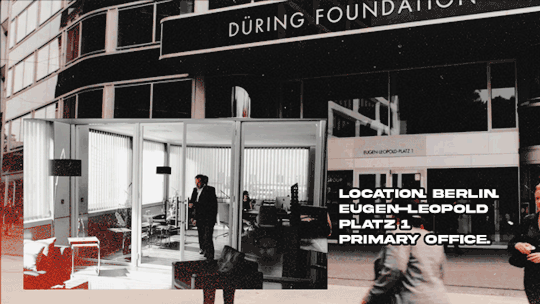
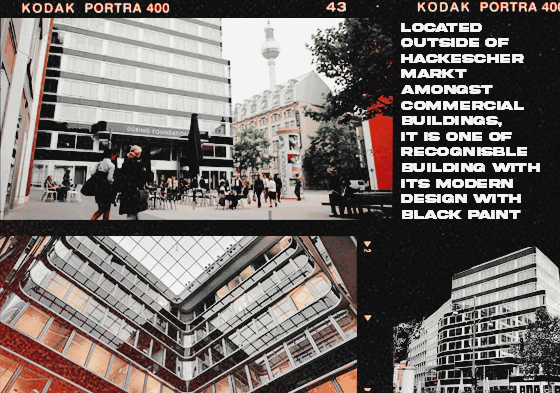

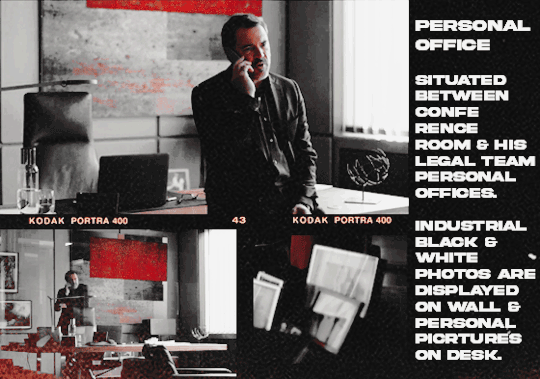
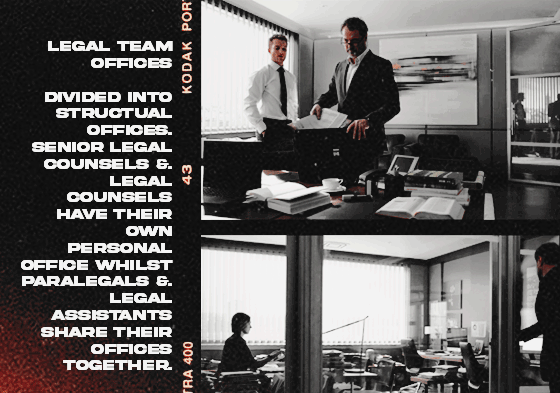

LOCATION. JOHANN'S PRIMARY OFFICE. Eugen-Leopold Platz 1, berlin.
Johann works in undisclosed subsidiary security company from Switzerland &. the company's headquarter is located in Eugen-Leopold Platz 1, outside of hackescher markt, berlin. it is one of most recognizable buildings amongst of commercials buildings on the corner of the market as it was meant to be built for an advertisement company by its completion in 2011, however after four years of operation, the advertisement company had gone bankrupt &. the security company chose its new headquarter place in berlin.
Designed by Hermann Schultz, this 8,800 m² building was an actualization of the previous company's vision: Orchestra of Ideas. The building was designed to mimic a modern orchestra house &. its interwoven instrumental imagery. The work surfaces are arranged around the central stage, with an atrium connecting all of the floors &. work spaces. the ground floor has reception, lobby, restaurant &. urban space. the company chose this building as a perfect cover-up of security services dealings that go through the company; an orchestra of safety.
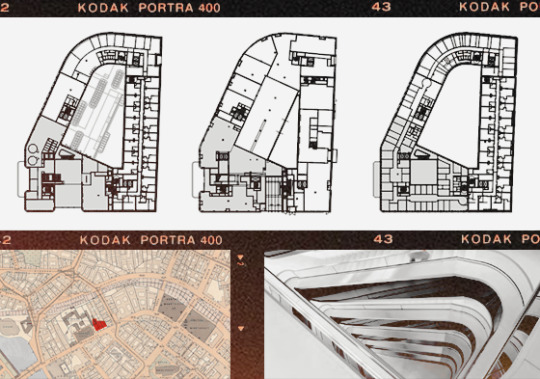
As general counsel of the company, Johann's office is located on the sixth floor of this eight stories building. The whole floor is floor is for the legal department. the office is a combination of closed but transparent office cells with open areas that create a spatial continuum that enables informal encounters &. concentrated work at the same time.
Upon walking from the escalator / lift, the visitor will be welcomed by the front office where johann's secretary resides &. a guest meeting room as an extension of the front office. within the front office, there's a modern designed sofa for the visitor to sit whilst waiting for the meeting. because of the transparent window/door that divide the front room &. the meeting room, a person can see the meeting takes place.
furthermore, when a person walks through the lobby on the left side of the front office, soon they will be welcomed by a bigger meeting room, of which people call it as a conference room. within this place, it can hold about twenty to twenty five people thus accommodating larger discussions / meetings than the front office. on the right side of the conference room, there's a couple of paralegals &. legal assistants offices. the senior legal counsels &. legal counsels offices are the left side as an extension from the press conference room which eventually make a box shaped floor.
johann's office is situated between the conference room &. legal counsels' offices. upon walking to his office, a person will be welcomed by modern abstract painting that matches the modern facade of the building alongside of several black &. white industrial photographs captured by johann's friends. there's also modern black sofa in between before johann's personal desk. johann's personal desk is a modern oak table with dark green deskmat &. trinkets such as steel globe, industrial desk lamp, personal photos on the corner of the desk &. a laptop that he carries than using computer. behind the desk, there's a small storage that keeps documents &. books he reads &. a safe box beside of it. there's not much that can describe his personality, however he keeps personal photos such as a picture of him &. his mother on his first day as a law student, a picture of him &. his cousin, nina, &. pictures of nina's triplets as well as one of triplets' drawing he keeps as a reminder of the family he barely connects despite being in germany.
johann continuously goes back & forth between his office in bern, new york, london, &. others however he sees the berlin office as his primary office.

9 notes
·
View notes
Text
BACK TO THE FUTURE: the animated series
I was working at Disney France when John Hays contacted me, looking for an overseas supervisor for a Saturday Morning cartoon that he'd be directing for Colossal Pictures. I’d done such things before. What interested me about this particular gig was that John wanted the supervisor to firstly work as part of the pre-production team at Colossal. I absolutely loved that idea. So headed to San Francisco to work on the BACK TO THE FUTURE cartoon.

I’d been introduced to John by mutual pal Tony Stacchi while backpacking in the USA a few years earlier. When Colossal diversified from special effects & TV commercials into longer form animation, John remembered me. Thinking my experience in Saturday Morning animation would fit with this new project, that both he & Phil Robinson would direct..

The crew had not fully assembled when I arrived in San Francisco. In fact, it was so early in production that even the look of the show had not yet been locked down. Many freelance artists, including Steve Purcell & Dave Fiess, plus Colossal staffers had a crack at design proposals, and I had a go too.

Colossal had acquired a new building for long form production, but it was still being refit. So, a few of us worked in a cold drafty room at Colossal’s 3rd street building. As the crew expanded, we were housed in a cramped annex in their Custer Street sound stage. Until we finally moved into the facility on 15th street. (That building would eventually host the entire Colossal animation department).

When some designs of mine were selected for the main characters, the plan for me to supervise production in Taiwan was modified. Instead, I became one of two art director/character designers on the series. The mighty John Stevenson being the other.

There was such a back & forth between Colossal & Universal over the main characters (even the actors got involved) that it was hard to do anything truly unique (although I was happy with how Doc Brown turned out). But we definitely had fun on the secondary character designs.

Private Stevenson & Private Baker..
John & I both worked on designs for the first episode together, then took it in turns thereafter. I designed characters on even-numbered episodes, and John designed for odd-numbered episodes. We both sat side by side, cracking each other up with sillier & sillier designs. Joyfully competing as the series progressed. (In my opinion, John utterly killed it with his designs for his ROMAN episode..)

Directors John Hays & Phil Robinson really assembled a mighty crew for this series. Dave Gordon & Richard Moore did the BG styling, with Dave doing a lot of great VisDev too. Robin Steele, and future Pixar heavyweights Bud Luckey, & Joe Ranft did the storyboards. Two more future Pixar legends, Bob Pauley & Bill Cone, led much of the layout & location design. Future LucasFilm directors Bosco Ng, & Steward Lee were stalwarts of the art department. Colour styling was by future CNN design director Dewey Reid, and John Pomeroy animated the title sequence!

After years of living & working in countries where I struggled to learn the language, it was great to finally be in a city where I could actually socialise. I was very lucky to be working with utterly inspiring artists. We often worked late, as we were all excited to be working together.

The pre-pro team was enthusiastic and worked hard, with high hopes for the show. However, by this point in my career I had a pretty good idea of how the Saturday Morning sausage was made. Having worked in the bowels of the sausage factory myself for 10 years by that point. I was hopeful, but also knew that it was anybody’s guess if the show would get the same care at the other end..

A show about a kooky scientist, his young buddy and a time machine had the potential to be absolutely great. The best of Doctor Who and a (family friendly) Rick & Morty. But stories that went to a new time zone each week needed a lot of design. I kept hoping that the scripts would contain less characters & locations. So that we could really refine the model packets. But every script contained tons of NEW characters & locations. Plus new outfits/gear for the main characters too. SIGH..

We'd been promised the 'top floor' animators at Taiwan's Cuckoo's Nest studio, but "Uh oh.." early footage made it clear that we'd gotten the basement crew instead.. "DOH!" Back when I'd supervised outsourcing myself, I learned that if the good artists are already assigned to another project there wasn’t much you could do. So, despite an absolutely stellar design & storyboard team, and early optimism, the show itself came out merely 'OK'. It ran for two seasons on CBS.

It has been one of the counter intuitive aspects of my career that sometimes the fave projects are NOT the best projects.. Despite being merely a footnote in animation history, this was absolutely a linchpin project in my own career, and I have fond memories of it to this day. Many great opportunities that came later were thanks to this show. I met many wonderful artists, who became lifelong friends, who I still work with and/or socialise with, decades later. On this project, I fell in love with San Francisco. And, after living out of a backpack for years, made this kooky town my home. I’d later go on staff at Colossal Pictures, which became my favourite studio I ever worked at. Where I finally escaped from Saturday Morning cartoons, into TV commercials and other more challenging projects.
#cartoons#animation#drawing#character design#back to the future#colossal pictures#marty mcfly#doc brown#visdev#visual development
7 notes
·
View notes
Text
On the top floor of a building somewhere in Ukraine is a drone workshop.
Inside is a chaotic workbench covered in logic boards, antennas, batteries, augmented reality headsets, and rotor blades. On one end of the room is a makeshift photo studio—a jet-black quadcopter drone sits on a long white sheet, waiting for its close-up.
This particular workshop’s Geppetto is Yvan. He grins as he shows off his creations, flittering around with a lit cigarette in his mouth, dangling ash, grabbing different models. (Yvan is a pseudonym; WIRED granted some of the people in this story anonymity due to the security risk.)
Yvan holds up a mid-size drone: This model successfully hit a target from 11 kilometers away, he says, but it should be capable of traveling at least 20. He’s trying different batteries and controllers to try to extend the range. He screws on a stabilizer tailpiece to a hard plastic shell—Yvan 3D-prints these himself—and holds up the assembled bomb. It’s capable of carrying a 3.5-kilogram explosive payload, enough to take out a Russian tank.
He uses his index finger and thumb to pick up a nondescript beige chip: This, he says, is what he’s really proud of.
One big problem with these drones—which are based on commercially available first-person-view (FPV) or photography drones—is that their explosive payload is jimmy-rigged on. It requires the drone to crash in order to close the circuit and trigger the explosion.
This chip, Yvan says, allows for remote detonation from a significant distance, meaning the operator can park their drone and lay in wait for hours, even days, before it goes off. He expects this technology could, eventually, be connected to AI—exploding only if it registers a nearby tank, for example. He has created a long-range smart land mine, I note. After the idea is passed through our translator, he nods enthusiastically.
There are many of these FPV drone workshops around Ukraine—Kyiv estimates there are about 200 Ukrainian companies producing aerial drones, with others producing land- and sea-based uncrewed vehicles. But Yvan, grinning proudly, insists that the manufacturer which he represents, VERBA, is the best.
Ukraine is facing increasingly tough odds in its defensive war against a better-resourced, better-equipped enemy. Thanks to delayed aid from Washington and shortages in other NATO warehouses, Ukraine has lacked artillery shells, long-range missiles, and even air defense munitions.
These drones, however, represent a bright spot for the Ukrainians. Entrepreneurship and innovation is scaling up a sizable drone industry in the country, and it’s making new technological leaps that would make the Pentagon envious.
The age of drone warfare is here, and Ukraine wants to be a superpower.
After Yvan showed off his workshop, we loaded into the car to visit one of his factories.
Behind a steel door is a room filled with racks, where 30 3D printers are working simultaneously, printing various drone components in unison. The twentysomething employees seem accustomed to the screeching alarm—some are soldering the drones together, others are tinkering with designs in AutoCAD, one is lounging on a sofa.
Strung across one shelf of 3D printers is a black flag, a take on Blackbeard’s (apocryphal) pirate flag. It shows a horned skeleton wearing an AR headset and holding a controller, thrusting his spear toward a bleeding heart as a quadcopter flies above.
In the first year of the war, when FPV drones were providing extraordinary footage of the front lines and viral video of unmanned aerial vehicles (UAVs) dropping grenades on Russian tanks captivated the world, Ukraine was snatching up every consumer drone it could find. Chinese technology giant DJI became a household name in Ukraine, thanks to its drones’ ubiquity on the front lines. Ukraine’s early advantage was quickly lost, however, as Russia scrambled to snatch up these Chinese-made UAVs.
“When Russia sees, from Instagram, my product, Russia starts buying all these components in China,” a VERBA executive says. The new demand from Moscow can often cause either shortages or inflation, squeezing out the Ukrainian companies. So entrepreneurs like Yvan began building their own.
When Yvan began his operation in the early months of the war following Russia’s February 2022 full-scale invasion, he was creating a handful of frankendrones to send to the Ukrainian Armed Forces. Now, Yvan says, his operation is producing 5,000 FPV drones per month. He offers a range of systems, from a mammoth 12-inch model to a 4-inch prototype.
At first, these entrepreneurs were pursuing this project on their own—scrambling, like most of the country, to be useful in helping Ukraine defend itself. Kyiv was initially cool to the idea that a domestic drone industry was worth the money and attention, especially given the demand for more conventional arms. Some in the military, one executive says, dismissed the utility of these innovative weapons and surveillance platforms as merely “wedding photography drones.” (One executive said Oleksandr Syrskyi, Ukraine’s new commander in chief, had been an early adopter inside the military, directly contracting 10 firms in early 2023 to begin assembling new technology for his forces.)
That attitude changed in 2023, when Ukraine set up Brave1, a government-run technology agency and incubator that helps connect private enterprise to the Ukrainian Armed Forces.
Since its creation, Brave1 has worked to streamline design, development, and procurement of new defense technology, while helping companies navigate government and military bureaucracy. Brave1 has already awarded more than $3 million in research and development grants and connected more than 750 companies to the Ukrainian Armed Forces.
When United24, the Ukrainian government’s in-house crowdfunding platform, first pitched an “army of drones” to its donors in 2022, it aimed to buy just 200 units. Today, Ukrainian president Volodymyr Zelensky projected late last year that his country would produce over 1 million drones in 2024.
“I would say that we can even double this number,” Natalia Kushnerska, head of Brave1’s defense technology cluster, tells WIRED.
“We have the responsibility and the motivation to do it today and to do it very fast,” she says. “Because we don't have any other choice.”
This is a war, one executive told me, “where the economy matters.”
Even hampered by sanctions, Russia has a $2 trillion economy—about 6 percent of that is geared toward its wartime production. Ukraine’s entire GDP, by contrast, is less than $200 billion.
While Kyiv has received substantial support from its NATO partners, it faces constant pressure to find efficiencies. The economics of these drones are looking better and better.
Yvan’s drones are, compared to conventional munitions, cheap. His most expensive unit runs about $2,500, but the cheapest is only $400.
Early in the war, the Ukrainians could reasonably expect—depending on weather, the mission, and Russian jamming efforts—that about 30 percent of their drones would connect with the target. Today, good Ukrainian-made systems are approaching a 70 percent success rate.
It can often take four or five artillery shells to successfully destroy a medium-range target, such as a tank. At $8,000 per shell—which are in short supply and high demand—that is an expensive proposition. Even if it takes two of Yvan’s most expensive drones to achieve the same objective, that’s thousands of dollars in savings. The proliferation of these drones reduces the “cost-per-kill,” as one executive phrased it, and reduces the strain on those dwindling ammunition stockpiles.
Even if Yvan and other producers are making more and more of their systems in Ukraine, they still rely on Chinese suppliers for critical onboard components. That comes with a trade-off—Chinese suppliers are cheaper, but they tend to be of lower quality and are happy to do business with Russia as well. Other options, such as companies in Taiwan, the United States, Canada, or Europe, are better quality but can be several times more expensive.
These supply chains, Yvan says, are “complicated.” Drone manufacturers who spoke to WIRED say anywhere between 40 percent and 80 percent of their drone components are made in Ukraine. Asked how long it would take before Ukraine manufactures nearly everything in these drones, from the rotor blades to the onboard components, Yvan provides a bullish estimate: “six months.”
It’s not an entirely unrealistic dream. Mykhailo Fedorov, Ukraine’s deputy prime minister and also minister responsible for digital transformation, said late last year that Kyiv hopes to break ground on a semiconductor factory, capable of producing 50,000 chips a year, by 2025. Ukraine produces about half the world’s supply of neon, necessary for the lasers used to make the chips.
There are already companies in Ukraine that have developed electronic design automation software—a necessary tool for producing chips—and that do electronic assembly inside the country itself. An industry source tells WIRED that a working group was formed in late 2023 to chart out how Ukraine could be a player in the semiconductor industry.
Another defense technology executive, Igor, manufactures considerably more-sensitive drones. “We definitely don’t buy anything from China,” he says. His products are more expensive, he says, “but we are looking for something that would differentiate us from the Russians.” At the moment, he says, “Russia is ahead.” He’s hoping to close that gap.
For any of this to work, however, there needs to be demand for these drones. The more they can sell, the more they can invest. “The things that they need,” Kushnerska says: “contracts and money.” Demand has certainly grown—fundraising platform United24 helped finance a fleet of naval drones and raised funds to purchase 5,000 surveillance UAVs. Other organizations have led similar purchases. The drone-makers, however, say it’s just not enough.
In early 2023, Ukraine’s parliament passed new laws to regulate how drone manufacturers can contract with the state; while profiteering is generally discouraged in the wartime economy, the law specifically allows the companies to charge up to 25 percent profit.
Yvan says he charges just a 10 percent premium for his drones and reinvests all that profit back into his operation. Representatives from other drone companies who spoke to WIRED say they operate on a similar basis.
More orders will mean more investment. Thus far, NATO countries have preferred to purchase locally-made equipment and ship it to Ukraine. That may be changing.
Bill Blair, Canada’s minister of defense, visited Kyiv shortly before I was there. While there, he announced that Ottawa would donate 800 Canadian-made drones to Ukraine. While the donation was lauded, a senior official asked the minister, “Why didn't you buy our drones?” After being briefed on the various innovations taking place in the Ukrainian drone industry, Blair was convinced. “We're also going to find ways to invest in Ukrainian industry,” he tells WIRED. “The point of the [Ukraine Defense Contact Group drone coalition] is to create capability, not only in the countries that are in the coalition but also capability in Ukraine.”
Even still, bureaucracy moves slowly. What’s more, startups—some of which are helmed by technologists or special effects gurus with no experience in procurement, let alone war—are often learning as they go. One executive, covering his eyes with his hand, says: “It’s like going completely blind.”
Not every company has been able to hack it. One executive says he’s aware of five defense technology startups that have shut down since the war began.
Much attention has been paid to FPV drones. They reinforce the idea that Ukraine’s defense is a scrappy, homespun effort. But even as the country has professionalized production of these light, agile drones, it has rapidly spun up production of other, more complicated systems.
One of Ukraine’s biggest disadvantages, from the start of the war, has been its difficulty in hitting targets inside Russia. Because Moscow has so effectively dominated the skies, Ukraine has been left playing defense.
That equation has changed substantially in recent weeks. Ukraine has had enormous success in attacking Russian oil refineries—knocking out as much as 15 percent of the country’s total refining capacity—and bombing Russian air bases. This has all been made possible by Ukrainian-made long-range attack drones.
Igor, who represents a company responsible for producing those long-range bombers, says they have developed a unit capable of flying 1,000 kilometers and carrying a 25-kilogram payload and has produced “several hundred” units for the Ukrainian Armed Forces. And they are actively working on a new model, capable of flying up to 2,500 kilometers. (It will pack a smaller punch, he said: “The longer you go, the lighter the payload.”)
These systems are more expensive: from $35,000 to $100,000. But if they can destroy millions of dollars worth of Russian equipment, that’s a bargain.
“These are no simple drones,” Igor says. “We don’t have the luxury, like the Western guys, to spend years in development.”
They’re not stopping with drones, either. They’re using the same technology to develop Ukrainian-made missiles, capable of flying farther and doing more damage to Russian military infrastructure, tucked well behind the front lines, which is regularly used to attack Ukrainian cities.
Igor’s goal is to “bring the war to Russia.” FPV drones have broadcast the realities of the front lines in high definition—long-range bombers could successfully make it feel real, he says. “They don’t suffer like we suffer.”
The effort to bring the war to Russia is advancing on multiple fronts. One of the most famous uncrewed systems of the war has been Kyiv’s Sea Baby drones. Videos have gone viral of these sleek ships clipping along the waters of the Black Sea.
According to Kyiv, they can carry 850 kilograms of explosives, go 90 kilometers per hour, travel some 1,000 kilometers—and they are invisible to radar. This is the kind of capability that the Pentagon, and other defense departments, has spent years trying to develop. “We like to joke that everything we do now, in Ukraine, takes three days—globally, it takes three years,” Brave1’s Kushnerska says.
Ask around Kyiv about these drones, however, and everyone is mum. Even otherwise talkative defense sources go quiet when asked about the Sea Babys. Asked about the vehicles, one defense executive smiled and said simply, “That’s classified.”
Kushnerska is equally evasive: “We need to keep silent about new solutions and new surprises that we are preparing for the enemy.”
The skullduggery is understandable. These uncrewed vehicles have been responsible for doing massive damage to Russia’s prized Black Sea fleet and spearheading the first major attack on the Kerch Bridge, in Crimea, in 2022.
Developing naval drones, however, is relatively easy compared to uncrewed land systems.
Over tea with Stepan, another defense entrepreneur, he lists the litany of difficulties of trying to build uncrewed land systems: They don’t travel well over tough terrain, they don’t operate well in inclement weather, and they don’t tend to go very far.
And yet, Stepan says, his company has overcome all those obstacles—which the Pentagon is still wrestling with—and has put these land systems in the field. Plus, Stepan says he’s “pleasantly surprised by how they’re being used.” He says their smallest unit, which has generally been used to deliver food and equipment, recently rescued and evacuated a wounded soldier from the front line.
Ukraine is not the only side deploying these land systems, however. In late March, pro-Kremlin channels celebrated what they said was the successful deployment of Russian-made uncrewed land systems, outfitted with an AGS-17 grenade launcher.
Ukraine believes its advantage will come from how it dispatches these systems. “You need a mesh system,” Stepan says. And that’s one of the single hardest things to do. Ukraine has started dispatching repeater UAVs, which are used to extend the base station signal, allowing the drones to fly farther and defend better against Russian jamming.
One ground drone, basically a mobile machine-gun turret, boasts an 800-meter range. What’s more impressive, however, is what happens when the land system is paired with a surveillance drone. Rather than them firing directly ahead, Stepan’s team has been training Ukrainian soldiers how to raise the weapon's trajectory, firing in a parabolic pattern and using the drone’s camera to adjust its aim. This tactic, he says, extends the drone’s firing range to 2.4 kilometers.
Doing combined operations with a couple of drones is hard enough. If Ukraine wants to really take advantage of these autonomous systems, it will need to figure out how to command multiple systems across land and air—and that’s where artificial intelligence comes in.
Stepan walks through the four levels of how AI can augment warfare: One is reconnaissance, where machine learning can be used to collate large volumes of footage and satellite imagery. Two is “copiloting,” as he calls it, where AI can analyze that intelligence and help draw insights. Third is planning, where AI can help develop “interlinked, complex orders” for multiple systems across land and air; he likens that to having AI develop football plays. Finally, step four is full autonomy, where AI collects intelligence, analyzes it, develops orders based on the intelligence, and dispatches and commands autonomous units based on that information—although humans review and approve each step of the process.
There are steps beyond this, Stepan notes, that remove human involvement entirely, but he isn’t interested in going there. Another executive recounted a story of how one company designed an autonomous machine gun, capable of conducting object detection and opening fire on its own—that was a “big, big problem,” he says, after the weapon’s radio signals were jammed and it began firing wildly. “I think we can do this slowly,” he adds.
Stepan’s systems are capable of operating at step four, he says. It means his systems have the “ability to take in variables” in real time—it allows his drones to change tactics depending on the environment. He provides examples: “What if our team is close? What if there is [electronic warfare]? What if one system loses connection?”
Kushnerska says Ukraine, alive to the concerns about and risks of AI on the battlefield, is mostly interested in using artificial intelligence only in the “last mile.”
It’s not enough to build drones. Ukrainians also have to know how to pilot them.
The last stop on Yvan’s tour is at a strip mall some distance away. Outside, a group of fresh-faced young men smoke cigarettes and enthusiastically greet him as he walks past.
Inside is a sterile classroom, with a dozen desks laid out—each featuring a tablet, a workstation, and an array of tools. In the back corner are pallets of FPV drones waiting to be unloaded.
This is Yvan’s drone school. Here, students learn not just the ins and outs of piloting these quadcopters but also how the machines work and how to repair them. Down the hallway is a large conference room where the students first test their skills—flags and checkpoints are propped up on cardboard boxes taped together into platforms of different levels. Once students can successfully navigate this makeshift course, they graduate to piloting the drones outside.
Yvan’s drones are normally painted jet black, designed to look as nondescript as possible. One drone, sitting on a desk in the training school, is spray-painted a bright orange. Yvan grins: “We’re sick of losing them in the grass.”
As Kyiv mobilized tens of thousands of ordinary Ukrainian men to fight, training has been a critical necessity. Particularly as ammunition supplies have dwindled, virtual training has been especially attractive. High-tech combat simulators have allowed Ukrainian troops to simulate real combat scenarios with rifles, rocket-propelled grenades, even anti-tank missiles. Ukrainian entrepreneurs are hoping to have dozens of these simulators online in the near future, with the goal of training 100,000 troops.
An industry source tells WIRED that a drone combat simulator went online last month, allowing trainees to simulate the entire process of launching a long-range drone strike. Version 2.0 is being rolled out now, they say, adding that it is likely the first immersive offensive drone simulator in operation. The simulator is also intended to help Ukrainian pilots practice integrating their drones with land systems, which is notoriously difficult for even experienced soldiers.
While Yvan’s drone school offers hands-on experience for users of the FPV drones, this new drone simulator allows pilots to practice long-range targeting, flying in adverse weather conditions, and countering electronic warfare.
All of this—the FPV drones, the long-range bombers, the flight simulators—is Ukrainian innovation at work. And it is moving remarkably fast. Some day, after the war is over, Yvan may well be on the front lines of a Ukrainian technology renaissance, fulfilling orders for the Pentagon. First, both he—and Ukraine—need to survive.
In recent weeks, Russian forces have made modest but steady advances along the front lines. Defense executives, meanwhile, see sabotage and industrial espionage as constant problems. Even more acute is the threat of Russian air strikes. One executive recently recounted how one of his company’s main facilities was nearly hit by two Russian cruise missiles. The risk is very real.
Leaving the school, Yvan opens up the back of his car. He rummages around and hands me two patches: One features a cartoonish and scantily clad woman wearing an FPV headset with the Ukrainian flag on the side, piloting one of Yvan’s rotocopters. The other, an army-green Canadian flag, carries the words “ALWAYS BE READY.”
5 notes
·
View notes
Text
The curious case of the short-lived Combination Vender Company
By Jonathan Monfiletto

From furniture for stores and schools to carriages and buses to metal fixtures and more, the Penn Yan area has been the site of various industrial endeavors creating a variety of interesting products. One such venture was the Combination Vender Company, which was at one point located on Water Street in the building that is now the site of Water Street Wines & Spirits.
Though it seems to have begun with promise, the Combination Vender Company also seems to have come in like lion – putting out a roaring good product for the Yates County area and beyond – and seems to have gone out like a lion too, with a ferocious argument between the company’s founders. The Yates County Chronicle of August 31, 1904 features the first reference to the Combination Vender Company in a Yates County newspaper, though it is unclear when the company started. That edition of the Chronicle notes Combination Vender recently moved from the Commercial Iron Works, located on Commercial Avenue in the Lake Street corridor after the 1872 Jacob Street fire, to a building on Water Street owned by C.H. Conklin.
A few months later, on February 8, 1905, the Chronicle carried an article titled “Penn Yan’s New Industry” and subtitled “Davis Brothers and F.B. Townsend Doing a Rushing Business on Water Street.” The article describes Combination Vender as a new industry that opened on Water Street after beginning in Beebe’s carriage factory the summer before. The Water Street building had previously been occupied by the Penn Yan Wine Company but now was the home of a firm managed by brothers Jacob and Lewis Davis and Frank Townsend, who invented the machine the company patented on October 25, 1904 and produced in its factory.
Though newspaper accounts call the machine a slot machine, it wasn’t something you would see in a casino even though in practice it might work that way. In essence, the machine was – as the company’s name suggests – a vending machine. According to the Chronicle, the vending machines had four compartments to carry four different commodities, such as candies and peanuts and more. Items cost one cent each, so a person put in their penny and chose the item they wanted. The machine received the penny and carried it back to the drawer and retained it. Then, the desired item fell through the opening into the hand of the person.
Interestingly, the machine also had a magnet that attracted steel or iron or tin and thus prevented fraudulent coins from being used to obtain items. Since a penny is made from brass and not magnetic, it moved through the machine as intended.
At the time of the 1905 article, the company employed 13 people and and had 1,000 machines ready for shipment, with a total of 3,000 or more orders. The Chronicle detailed the company’s process for making the machines on Water Street: On the first floor, oak woodwork for the machines was cut to the right size by circular saws and into the right shape by a machine carrying different knives. Then, the wood was smoothed and polished by a revolving wheel. On the second floor, the iron and brass were prepared, with the iron cut into shape by metal dies. On the third floor, the machines were put together, varnished, and prepared for sale. At that point, every part of the machines was made on Water Street except for the enameled iron front – made by the Lisk works in Canandaigua – and one little casting made in Buffalo.
Combination Vender had moved to Water Street in 1904 to “largely increase its capacity,” according to the Chronicle, and indeed by the end 1905 the company was reported to employ “fifteen or sixteen men” and its machine was touted as “one of the best on the market and … finding a ready sale in all parts of the United States.” The company incorporated in early 1906 with a capital stock of $100,000, with the Davis brothers and Townsend among the directors. “These gentlemen have an excellent invention, a money maker, and are to be congratulated,” the Chronicle said.
In December 1908, the Combination Vender building was the victim of an apparent arsonist in the Penn Yan business district. The engine room, where the fire ignited, and another small building were significantly damaged, and the building sustained water damage. However, a little more than a year later, in the first Chronicle edition of 1910, an article headlined “Prospering Industries” highlighted Combination Vender along with other industries and interests throughout Penn Yan and Yates County. the sub-headlines boasted, “Penn Yan’s Factories and Mills Show Marked Progress During 1909,” “Railroads Show Increase Over 1908,” and “Northern Central Business for November and December Gains $14,200. Factories Nearly all Busy. Outlook for 1910 Very Promising in all Industries.”
For the article, Combination Vender reported an increase in business from 1908 to 1909 and had “every reason to be assured of a prosperous year in 1910,” with no decrease in its workforce during the winter despite such a cut being the rule in similar factories. “This firm has a great deal of competition to meet, but its machines are satisfactory and increased business naturally follows,” the article states.
However prosperous 1910 may been for Combination Vender, 1911 appeared to usher in the downfall of the company. On May 31, the Chronicle reported the factory was shut down and the employees put on vacation because of strained relations between Townsend, the company secretary, and Jacob Davis, the company treasurer. Davis had apparently fired Townsend, giving the secretary “a notice that his services were no longer required,” but Townsend refused to stop working. Davis delivered Townsend another notice, this time accompanied by a witness, yet Townsend still refused to quit. Townsend stated his firing by the treasurer required the consent of the board of directors.
Davis called a meeting of the board of directors, which voted to discharge Townsend. The secretary still refused to step down, claiming the notice of the meeting must specify its purpose. With the factory slated to reopen the following week, Townsend said he would be there while Davis said Townsend would not be allowed to work and the factory would be closed again if needed. It was noted Davis held the majority of shares in the company, while Townsend was a stockholder and was also superintendent of the factory for some time.
The Penn Yan Democrat of June 9, 1911 sheds more light on Townsend’s side of the argument, stating the secretary had asked the treasurer for a sworn statement of the condition of the company but Davis failed to do so. While Townsend said he made the request in writing that March, Davis said he had no recollection of it other than presenting a statement to the board and giving it to Townsend to examine. However, at that meeting, Townsend said he asked Davis to swear to the statement, but Davis would swear only to part of it. This argument apparently led to Davis seeking to fire Townsend.
According to the Democrat, Townsend sought a penalty for Davis for his violating a law that requires the treasurer of a company or corporation to render a sworn statement under certain conditions. Townsend also sought back payment for his prior work for the company. Indeed, Townsend filed a lawsuit against Davis for the violation of corporation law. The presiding judge dismissed the action, however, stating Townsend, as a director of the company, had “every opportunity to acquaint himself with the financial standing of the company,” the Chronicle stated on December 13, 1911.
As reported by the Chronicle on June 4, 1913, the Appellate Division ordered a retrial, with this time the jury deciding the case in favor of Townsend and the presiding judge awarding $680 (equivalent to $21,298 in 2023 dollars) to Townsend as a penalty to Davis. This verdict appeared to ring the death knell for Combination Vendor.
On January 9, 1914, the Democrat reported a man was looking for a suitable building to manufacture gas fixtures, and one place under consideration was “the brick building on Water Street until recently occupied by the Combination Vender Company, this company having moved into the adjoining wooden building,” formerly occupied by Sanderson’s coal office. A year later, on January 15, 1915, the Democrat reported a fire destroyed the three floors of the Combination Vender building. Baldwin’s Bank owned the building and had it insured for $3,000, while Davis had the machinery and company stock insured for $8,000.
The last mention of the Combination Vender Company in Yates County newspapers came on December 3,1924, when the Chronicle reported a fire at Clumm’s Accessory Store – apparently located in the wooden building once the home of Combination Vender – in which 500 of Combination Vender’s machines were destroyed. Davis, then living on Rochester, stored the machines there until they could be distributed in nearby areas, and some of the machines were recently purchased by a Rochester man. Instead, “all of these, charred by the fire and soaked with water, were dumped down through the two stories to the ground floor,” the Chronicle wrote.
#historyblog#history#museum#archives#us history#american history#local history#newyork#yatescounty#pennyan#business#manufacturing#industry#building#vendingmachine#slotmachine#combinationvenderco
2 notes
·
View notes
Text

Chrysler Building. A World of Art
Global Recognition: The Chrysler Building's fame extends well beyond New York City, earning it recognition and admiration on a global scale.
Architectural Dialogue: Architects and designers worldwide engage in a continuous dialogue with the Chrysler Building's design, drawing inspiration from its aesthetic richness.
Symbolic Birds: The majestic eagle gargoyles perched high on the Chrysler Building's crown, with wings outstretched, represent freedom and aspiration, a symbolic presence in the New York City skyline.
Futuristic Elements: The Art Deco design elements incorporated into the Chrysler Building were seen as futuristic during their time, reflecting the optimism and progress of the early 20th century.
Architectural Innovation: The Chrysler Building's setbacks and terraced crown represent a departure from traditional skyscraper design, embodying the spirit of innovation that defined the era.
Chrysler Building. Literary Legacy
Novel Inspirations: The Chrysler Building has often served as a backdrop in novels, becoming an integral part of the narratives and symbolizing the essence of New York City.
Film Fame: Its distinctive appearance has made the Chrysler Building a sought-after location for film and television productions, solidifying its role as an icon of popular culture.
Influential Design: The influence of the Chrysler Building's Art Deco style can be seen in the design of numerous buildings worldwide, showing its enduring impact on architecture.
Fashion Statements: Art Deco, epitomized by the Chrysler Building, has left an indelible mark on fashion, with its geometric patterns and sleek lines inspiring clothing and accessories.
Cultural Beacon: Beyond its architectural marvel, the Chrysler Building is a beacon of innovation, aspiration, and creativity that embodies the spirit of New York City's enduring cultural significance.
Chrysler Building. Preserving History
Ongoing Care: Diligent preservationists continue to protect the Chrysler Building's exquisite details and structural integrity, ensuring its heritage remains intact.
Art Deco Resurgence: The resurgence of interest in Art Deco design has brought renewed attention to the Chrysler Building's architectural significance, prompting preservation efforts.
Sustainability Commitment: Modernization initiatives have also included sustainability efforts, enhancing the building's energy efficiency and environmental impact.
Accessible Beauty: While primarily a commercial office building, the Chrysler Building's lobby remains accessible to the public, offering a glimpse into its Art Deco grandeur.
A Living Heritage: The Chrysler Building's legacy is not static but continues to evolve, adapting to changing needs while preserving the timeless essence of its design.
Chrysler Building. A Guiding Light
Beacon of Hope: The illuminated crown of the Chrysler Building stands as a symbol of hope and unity, often bathed in special colors to commemorate significant events or causes.
Cultural Connection: Its presence in the New York City skyline creates a cultural connection, a shared symbol that binds residents and visitors in a collective appreciation.
Historical Resilience: The Chrysler Building has weathered the tests of time, remaining steadfast through historical events and shifts in cultural preferences.
Artistic Expression: Countless artists have paid homage to the Chrysler Building in various forms of art, capturing its beauty and significance across generations.
Promise of Tomorrow: As the sun sets behind the Chrysler Building, its illuminated crown serves as a guiding light, reminding us that even in challenging times, a brighter future awaits on the horizon.
The Chrysler Building, with its enduring elegance and architectural marvel, continues to ignite the imagination and inspire. Its legacy transcends its steel and concrete structure, serving as a testament to human creativity, determination, and the indomitable spirit of New York City. In its gleaming spire and Art Deco opulence, we discover not just a building but a symbol of aspiration, a beacon of possibility, and a tribute to the heights that can be achieved through visionary ambition and unwavering dedication.
Previous page Chrysler Building Next page
#Chrysler Building#nyc#new york city#new york#new-york#newyork#ny#manhattan#urban#city#usa#United States#buildings#travel#journey#outdoors#street#architecture#visit-new-york.tumblr.com
111 notes
·
View notes
Text
Adam Something, the vaguely left-flavored Hungarian youtuber, has a video arguing that skyscrapers are a really bad solution to housing issues, and I tend to agree. The easiest concerns to point to are environmental and cost-based--skyscrapers are expensive as hell, and require a huge amount of concrete and steel!--and I would add a more marginal concern about safety to that, because fires in big buildings are rare, but very dangerous. He points out that low rise (~10 story) commie blocks are about as space-efficient and much cheaper to build.
His other big point is about alienation from the rest of the city, and I don’t like this argument because I think it’s kind of hard to pin down exactly what problem it’s pointing to. I think it’s better to rephrase it in terms of material tradeoffs, namely 1) street access is easier from a low-rise building, which means easier access to neighborhood amenities like parks; and 2) concentrating purely residential space in one area is likely to increase the distance that some of those residents have to travel to go to work or school, whereas a more even kind of mixed-use development will tend to reduce travel distances.
Very large high rise buildings seem to make sense only for certain kinds of commercial real estate, and even then, recent trends around remote work are starting to call into question whether they make sense even for that. The thing that seems to make high-rise residential buildings really attractive is that it’s conceptually easy. You don’t have to reanalyze your zoning and transport planning on a fundamental level, and you don’t have to start moving away from really nasty, sprawl-intensive policies. City governments can build a high-rise low-income housing project in a peripheral part of the city, move a bunch of people into it, and then abandon it, and when it inevitably decays due to failures of planning and maintenance, point to it as an example of why poor people don’t deserve housing.
#commie blocks are just his example#there are IMO much more attractive models of dense low-rise development#like barcelona#a world in which we build high rise housing#(in an intelligent way and keep it well-maintained)#is better than world where we do not build housing#but strikes me as not quite optimal
80 notes
·
View notes